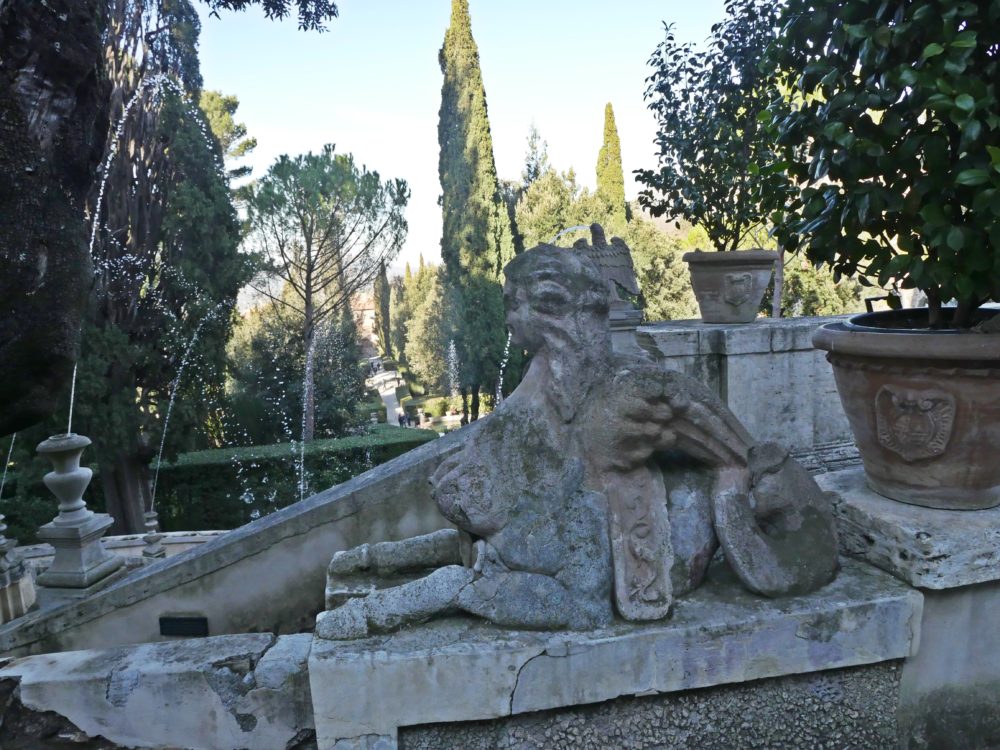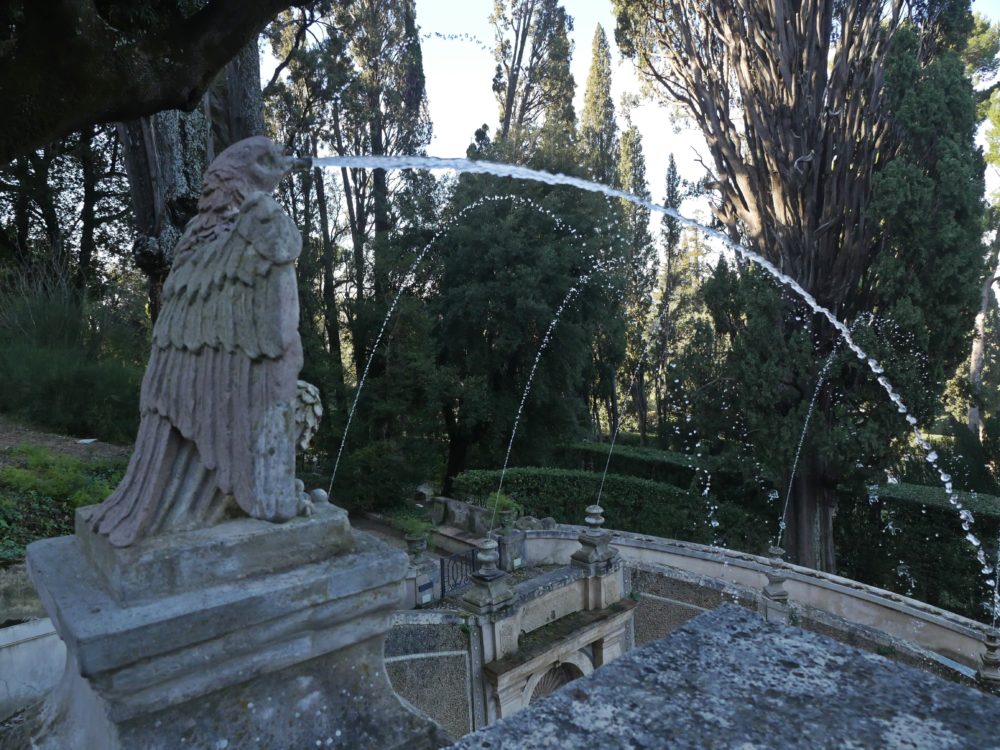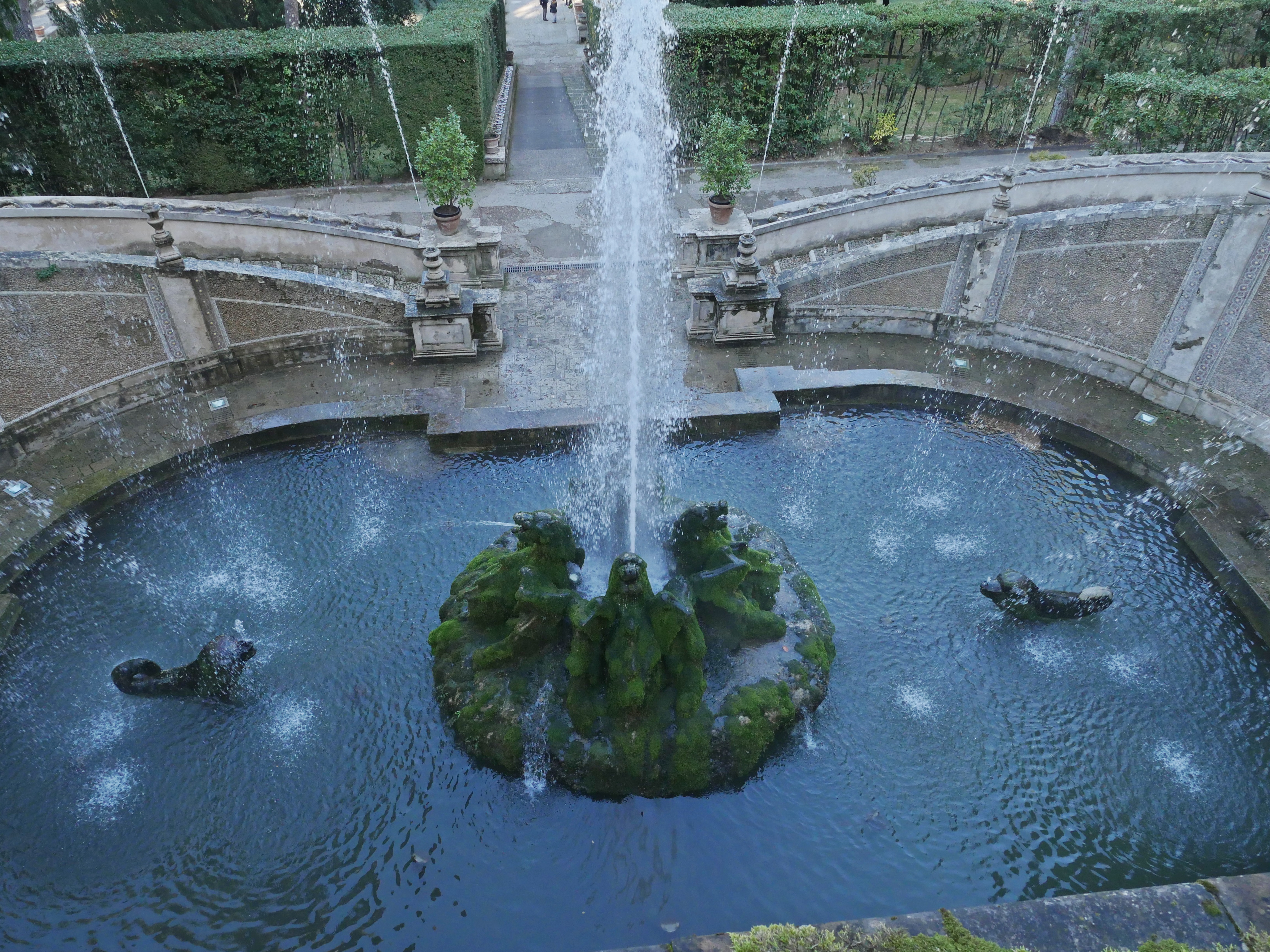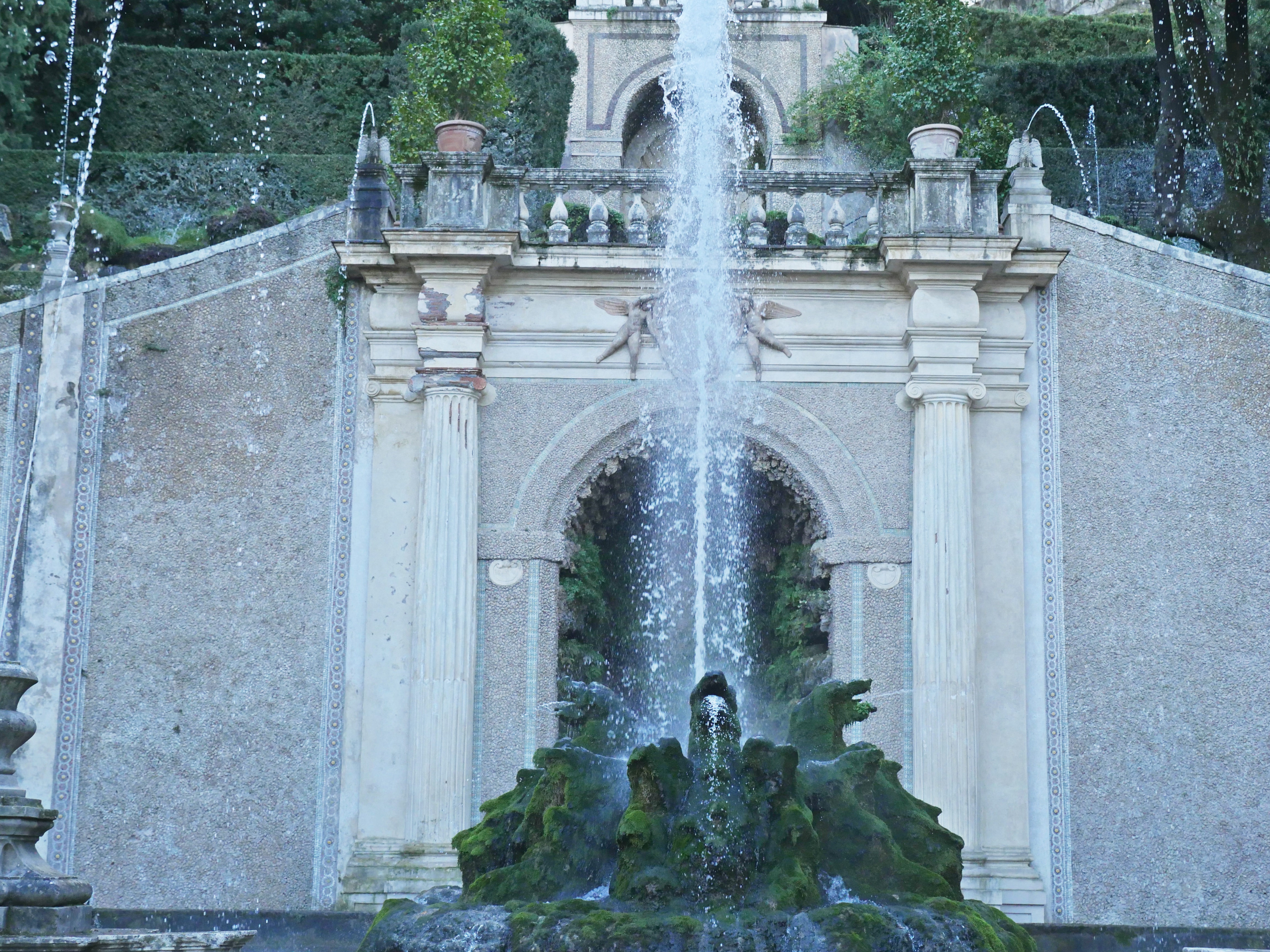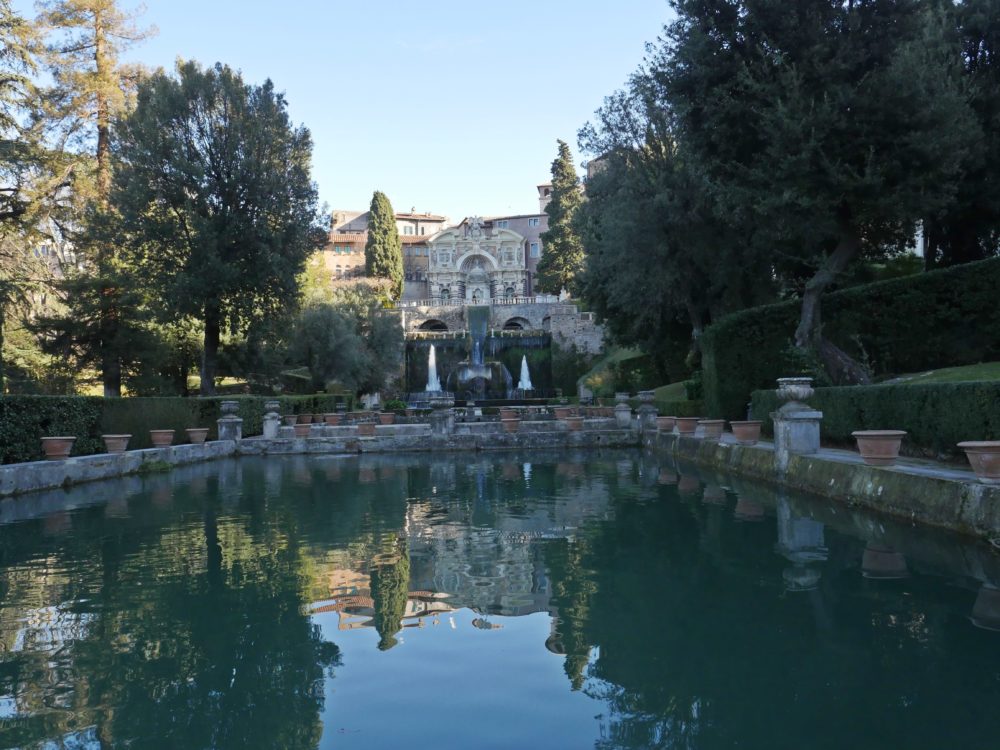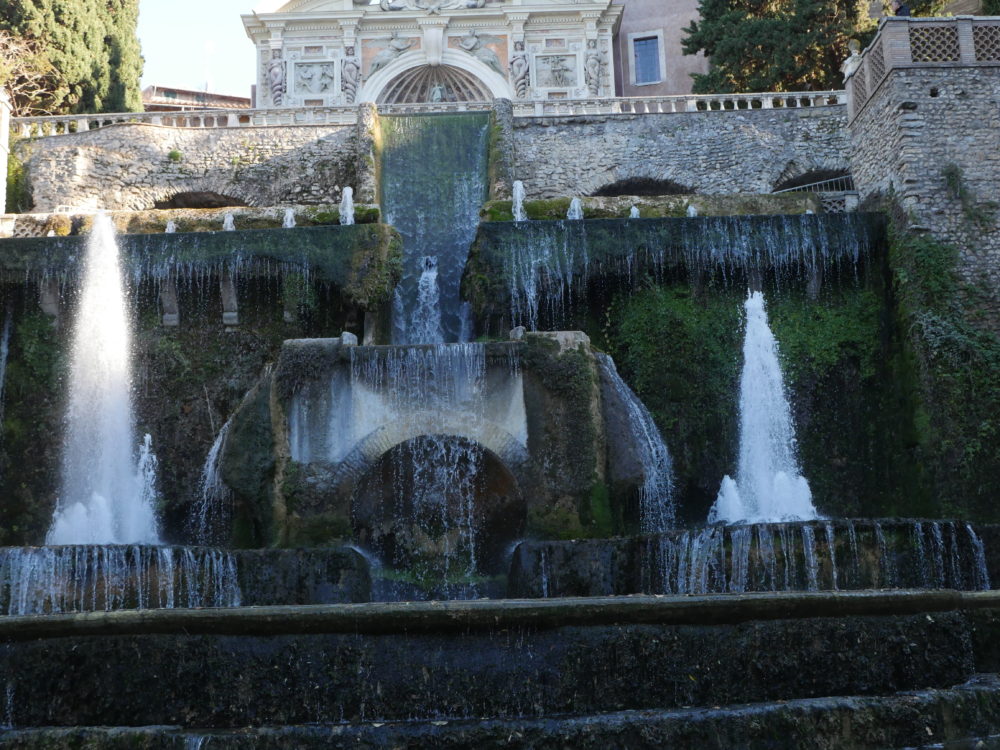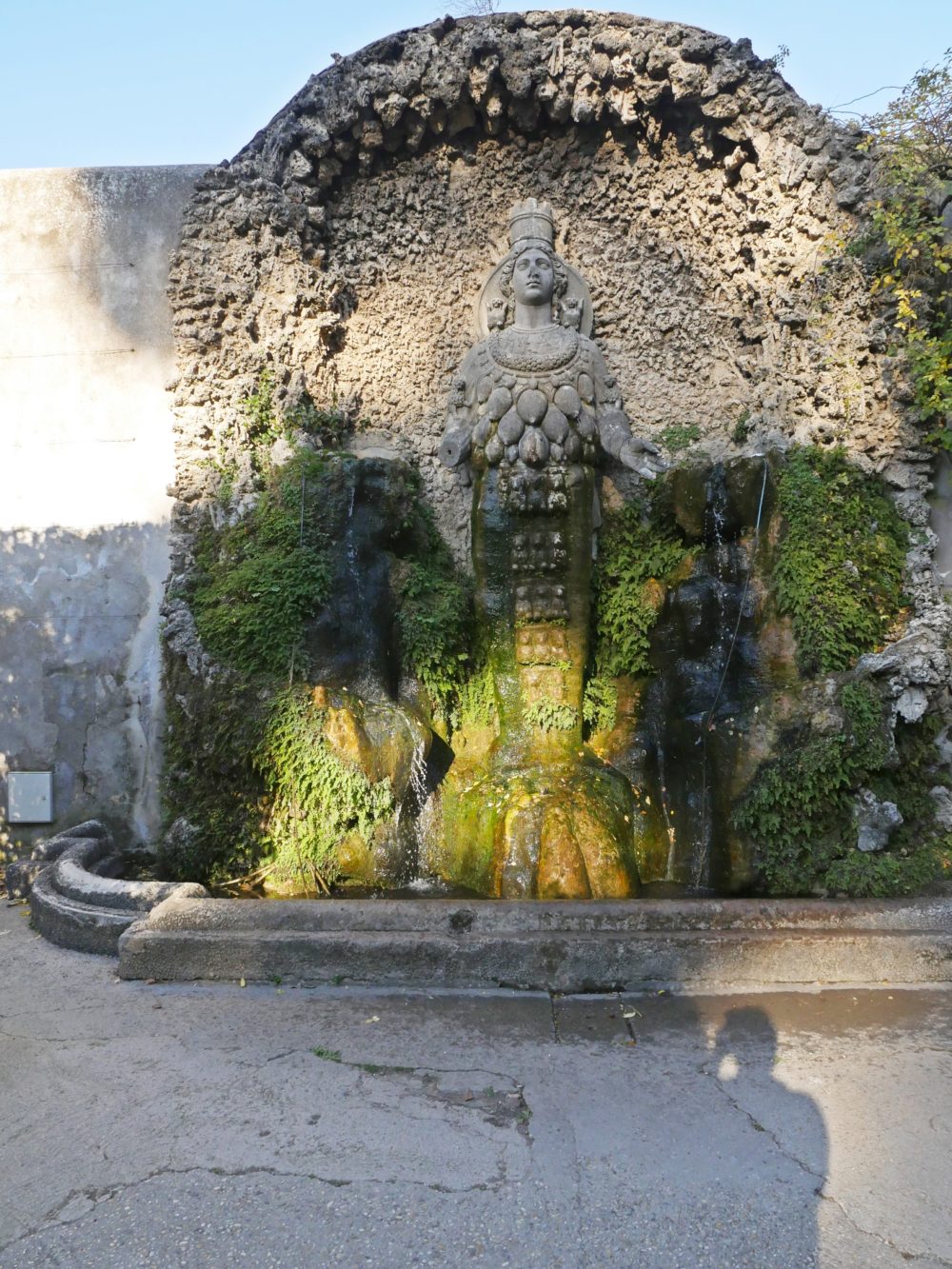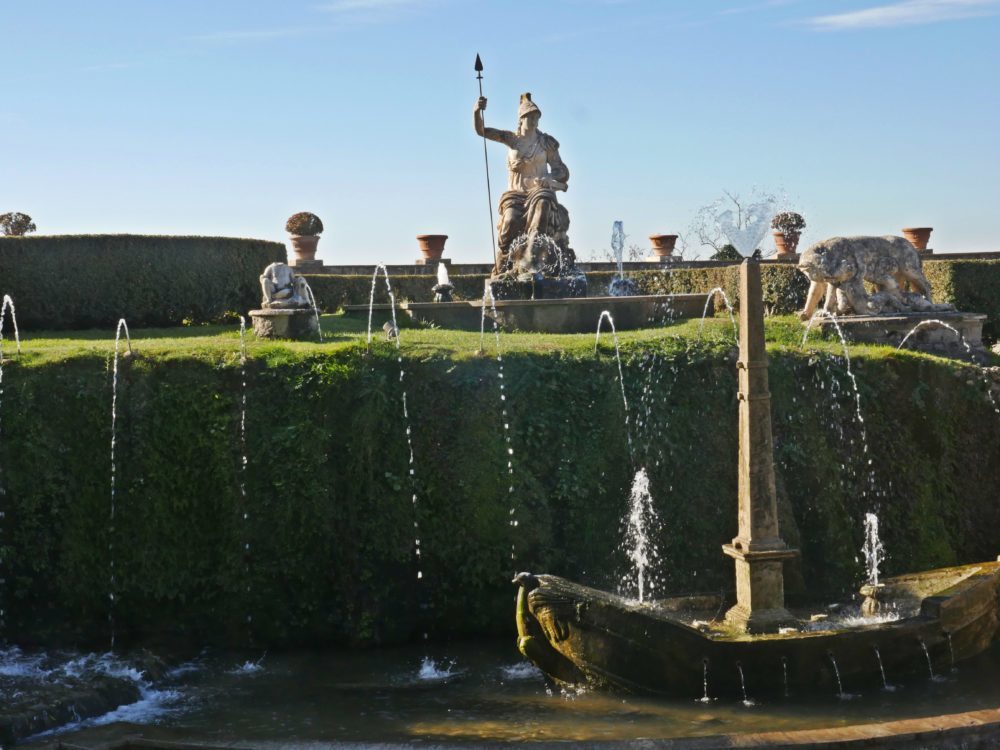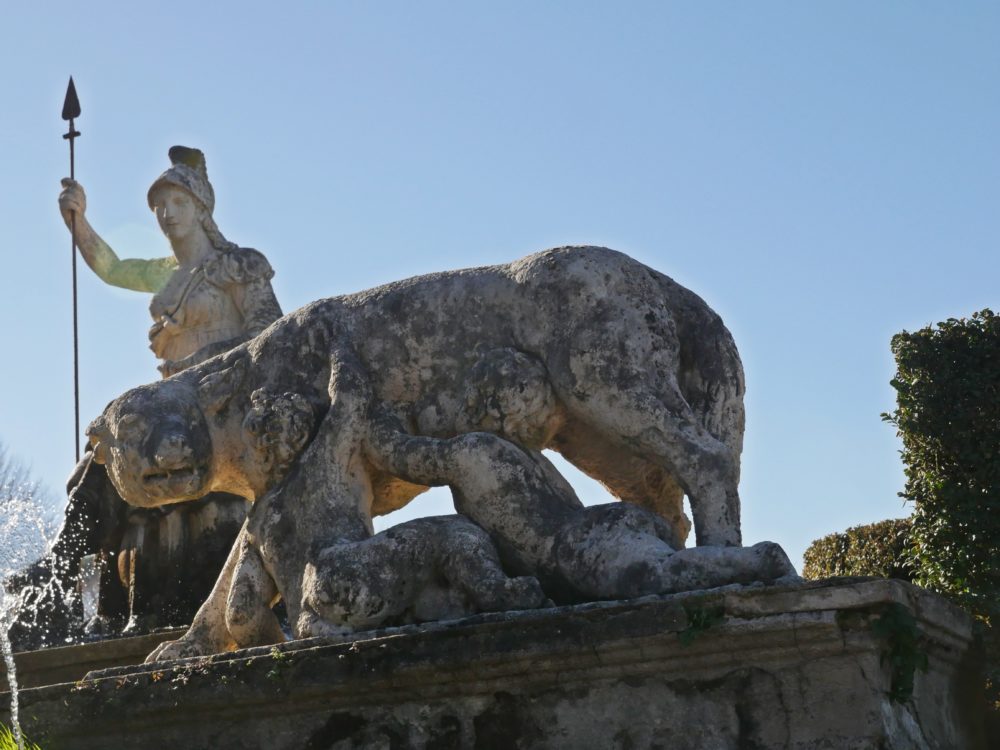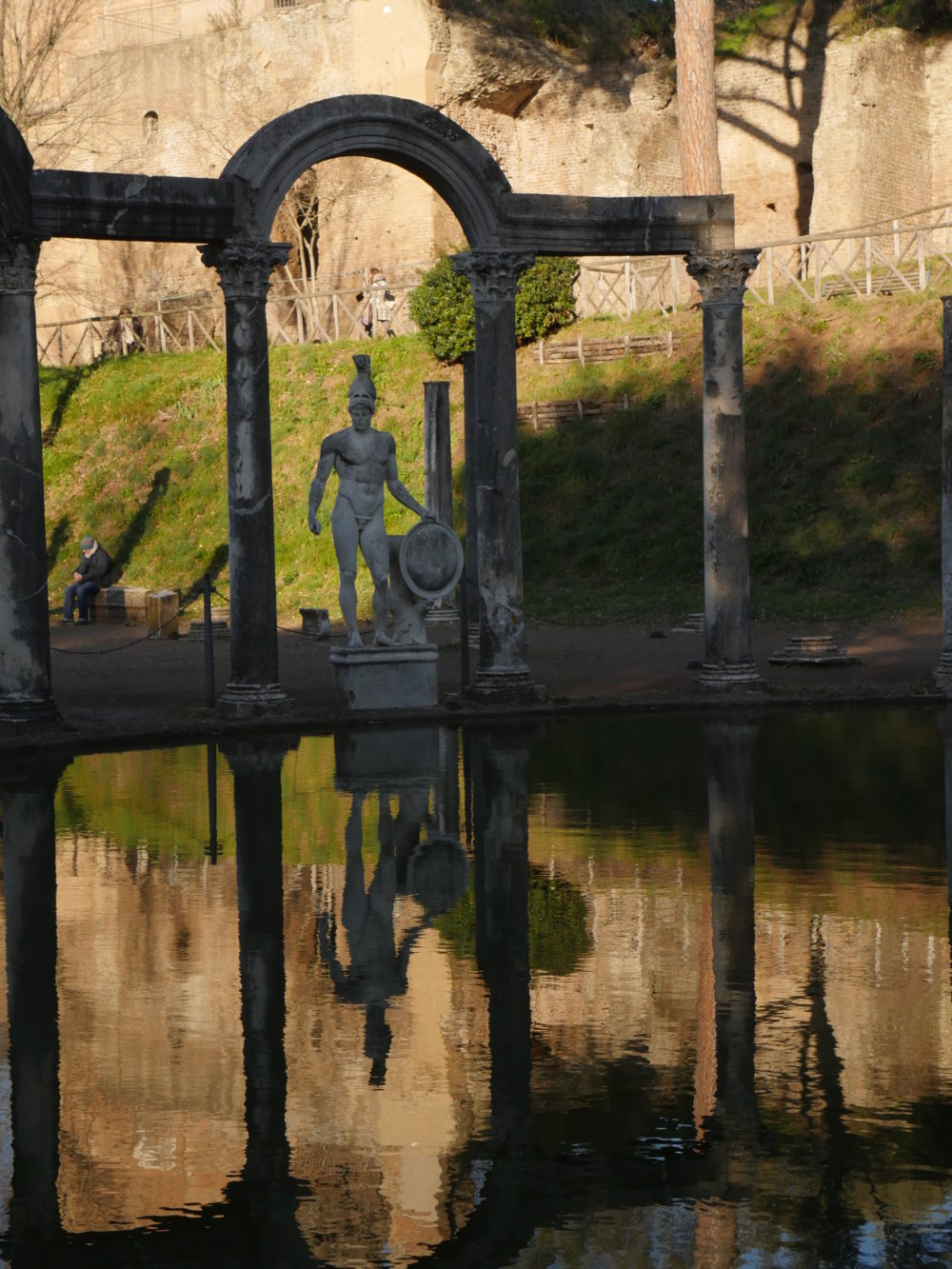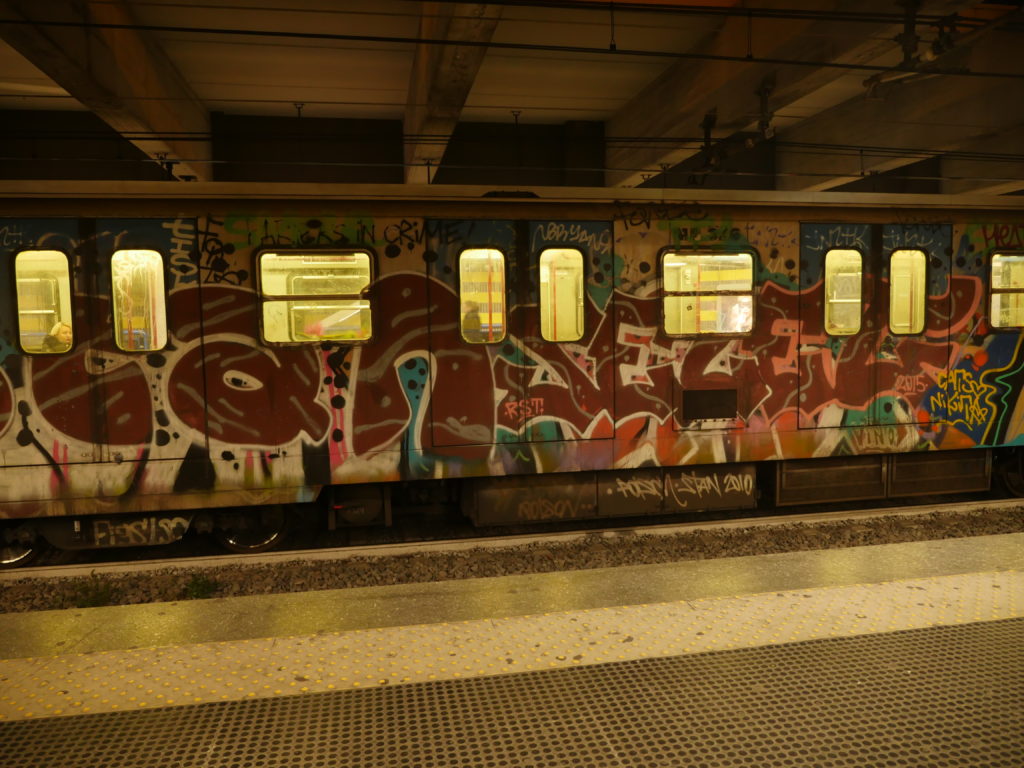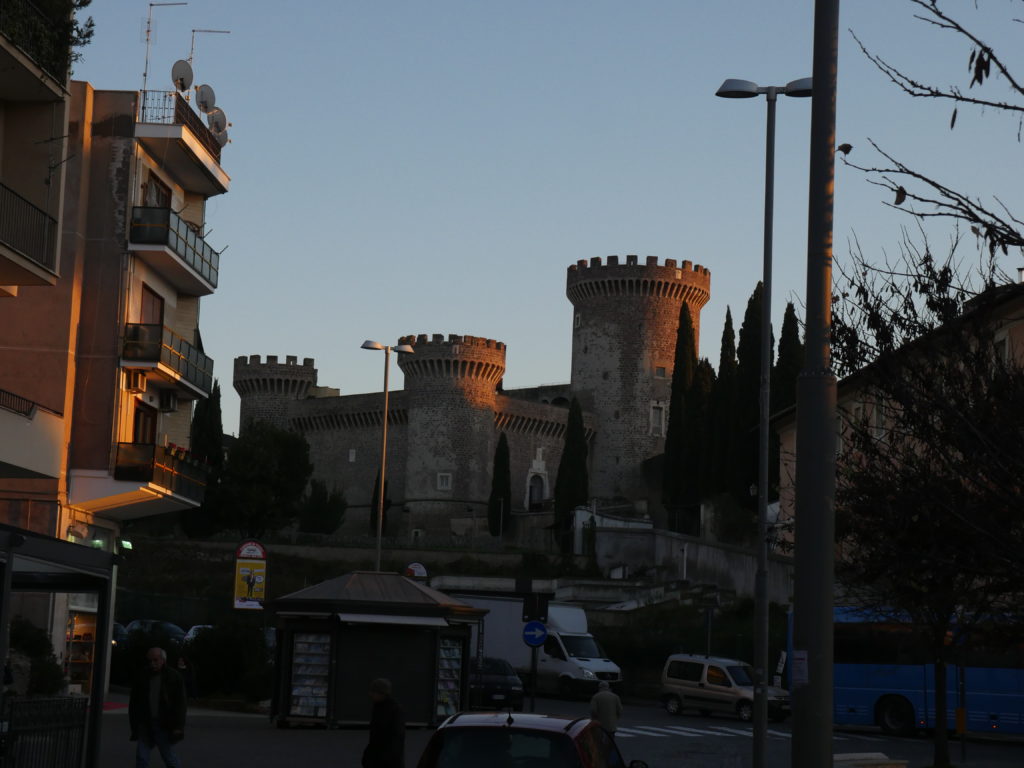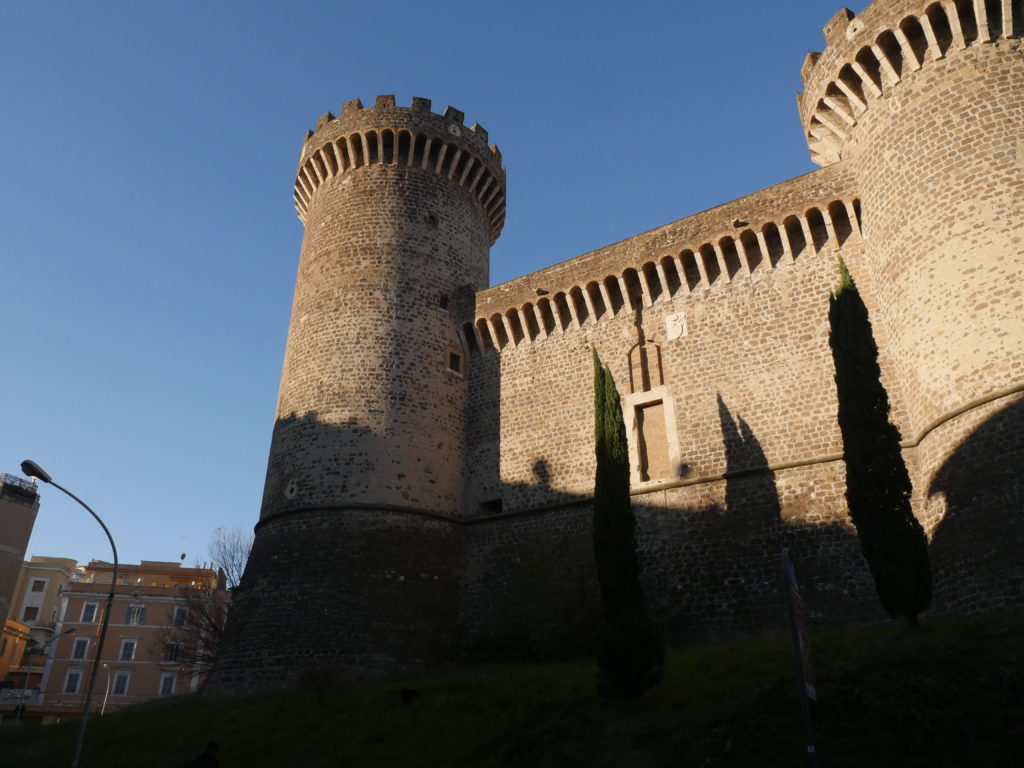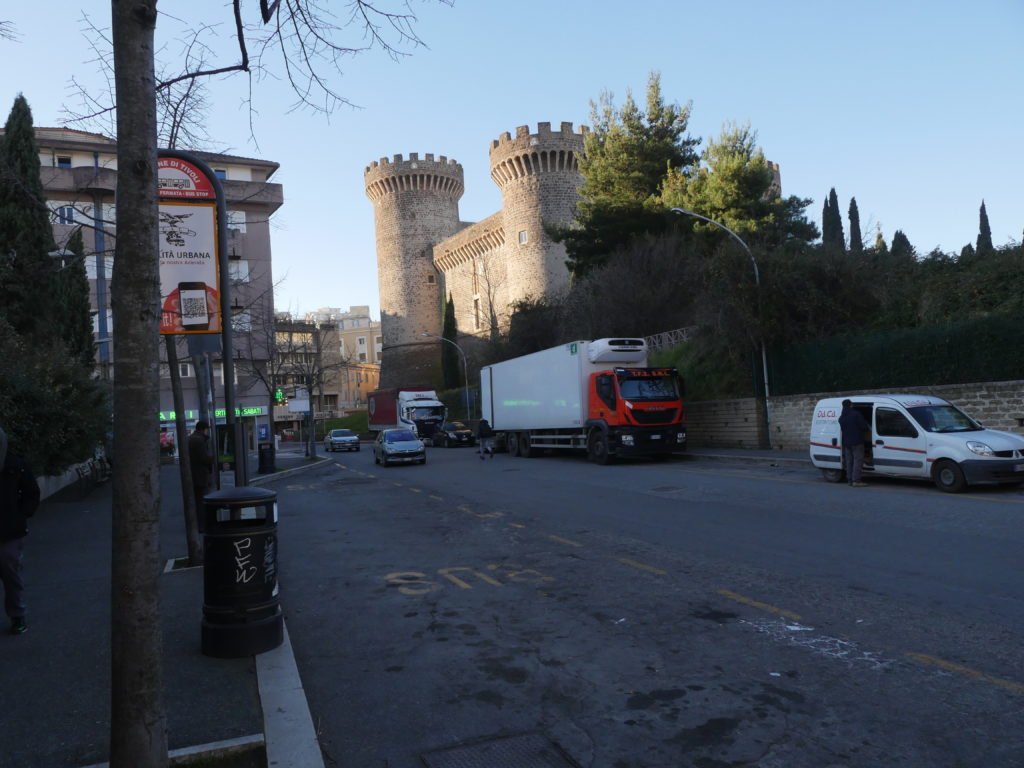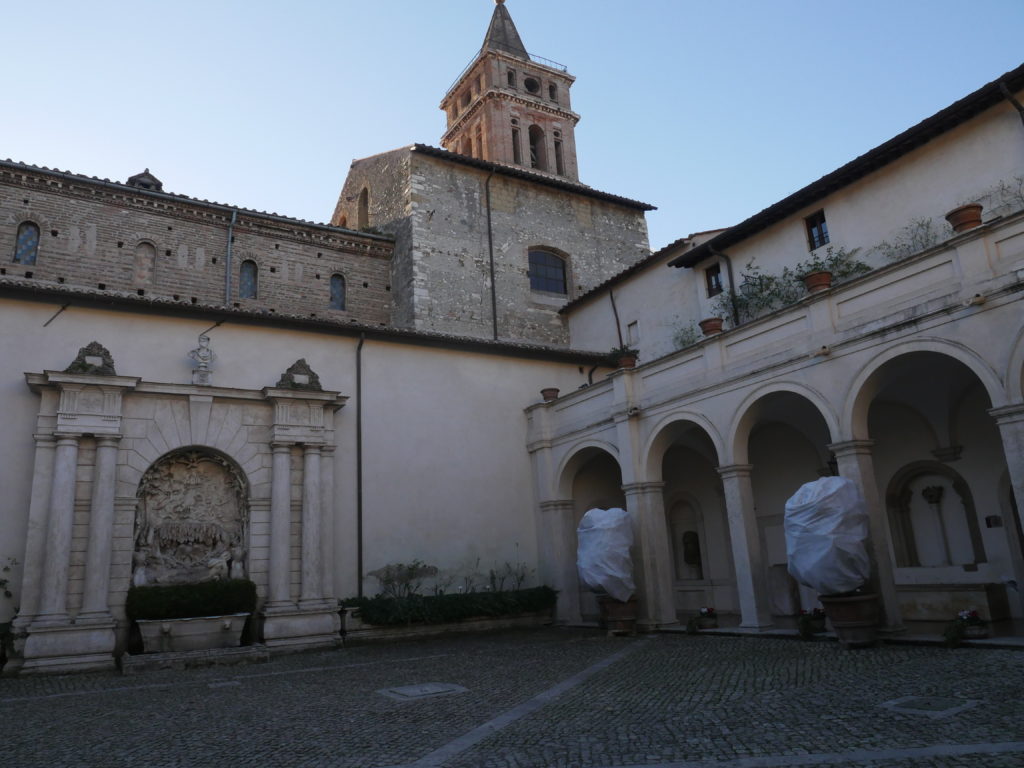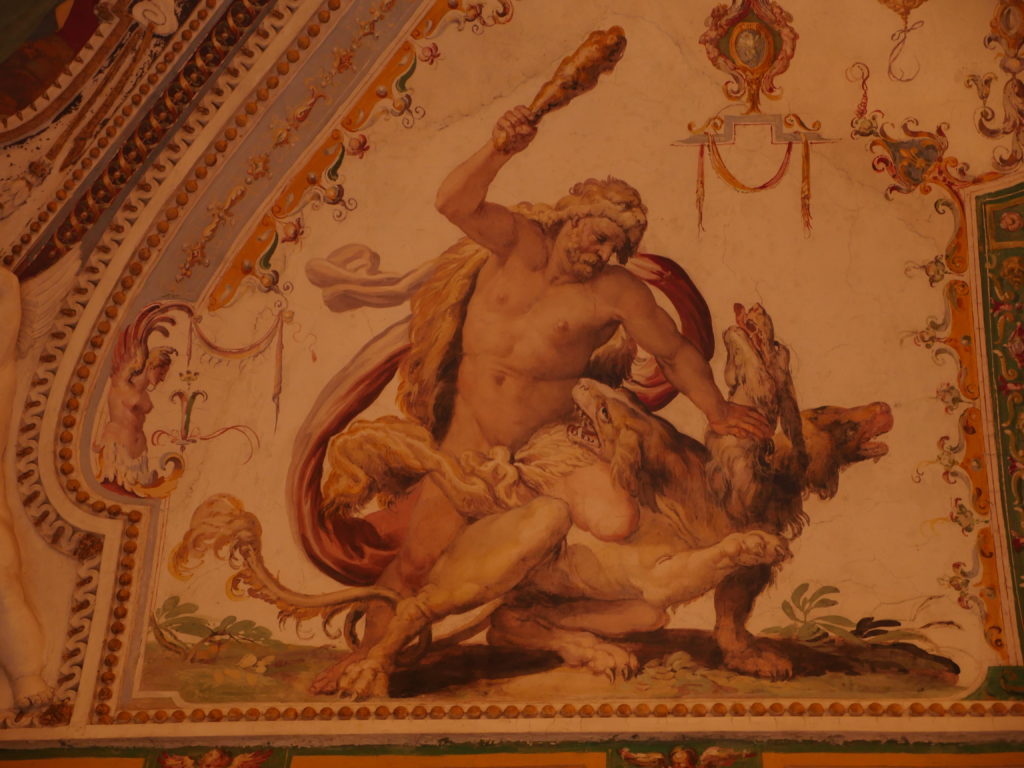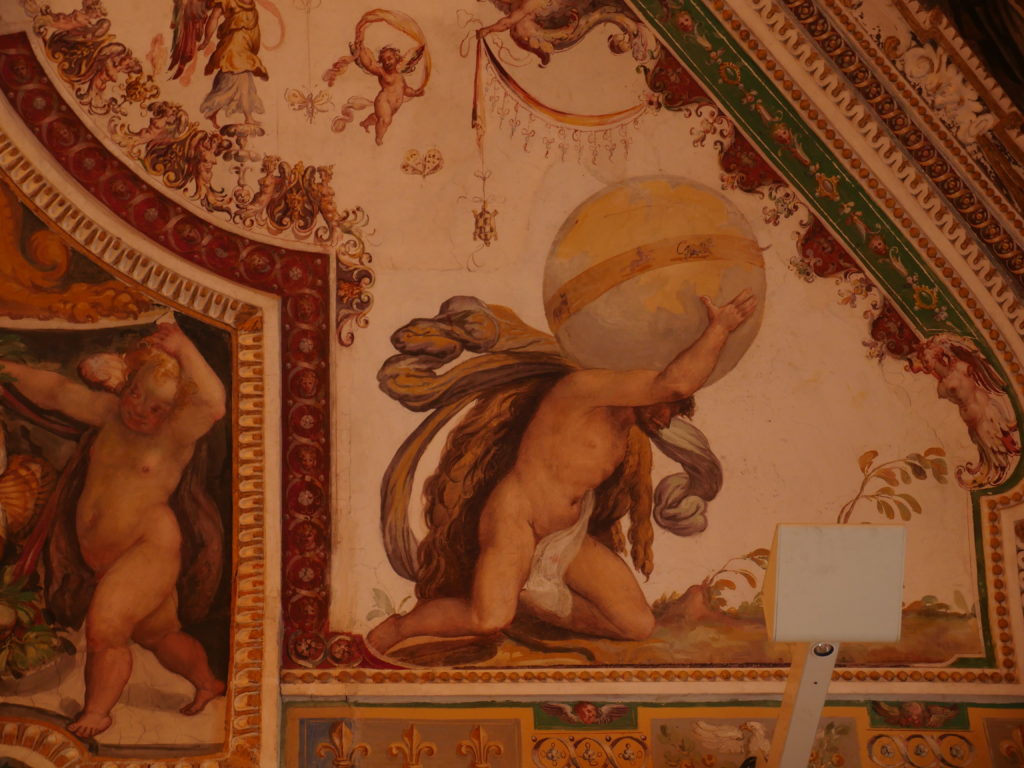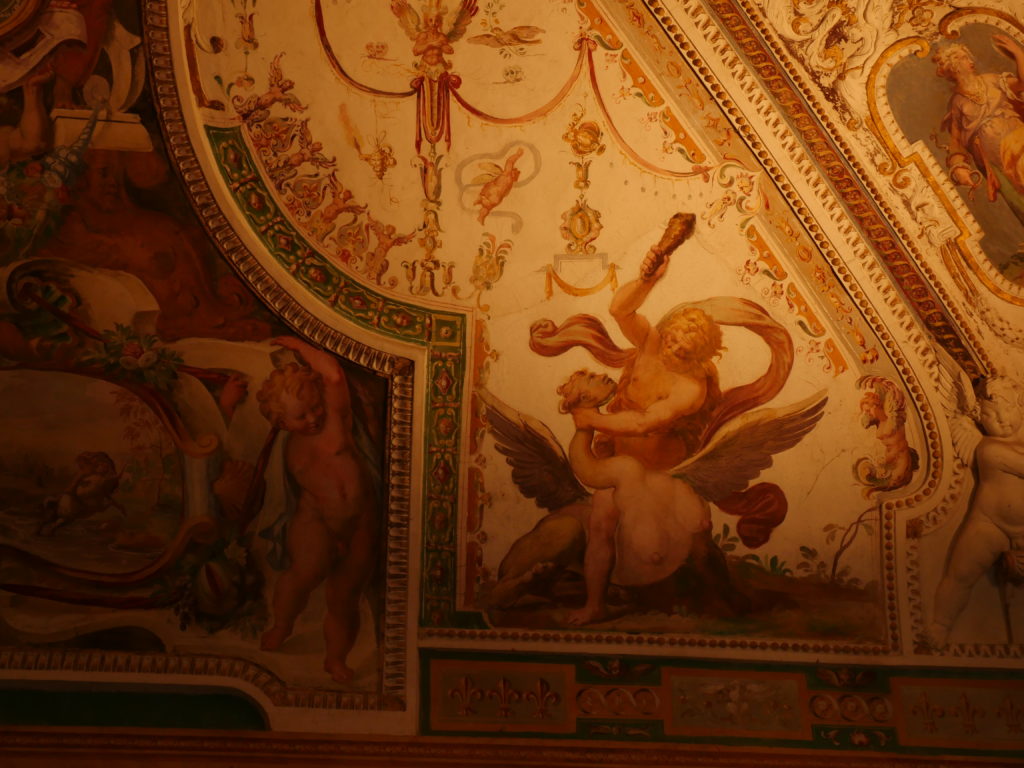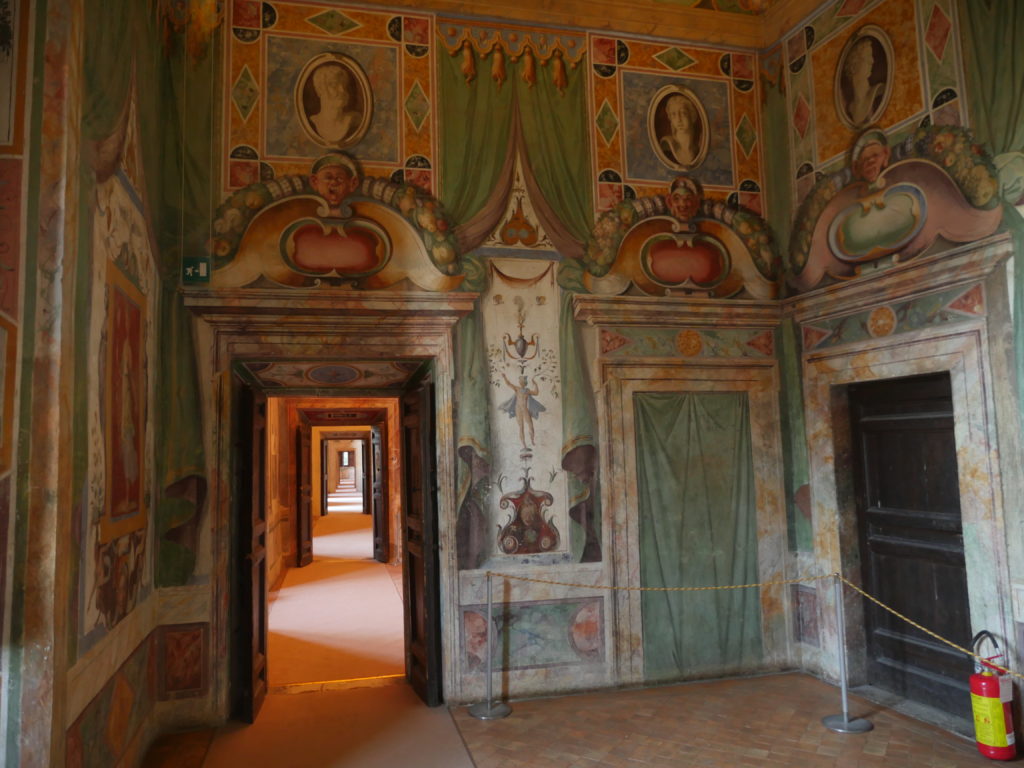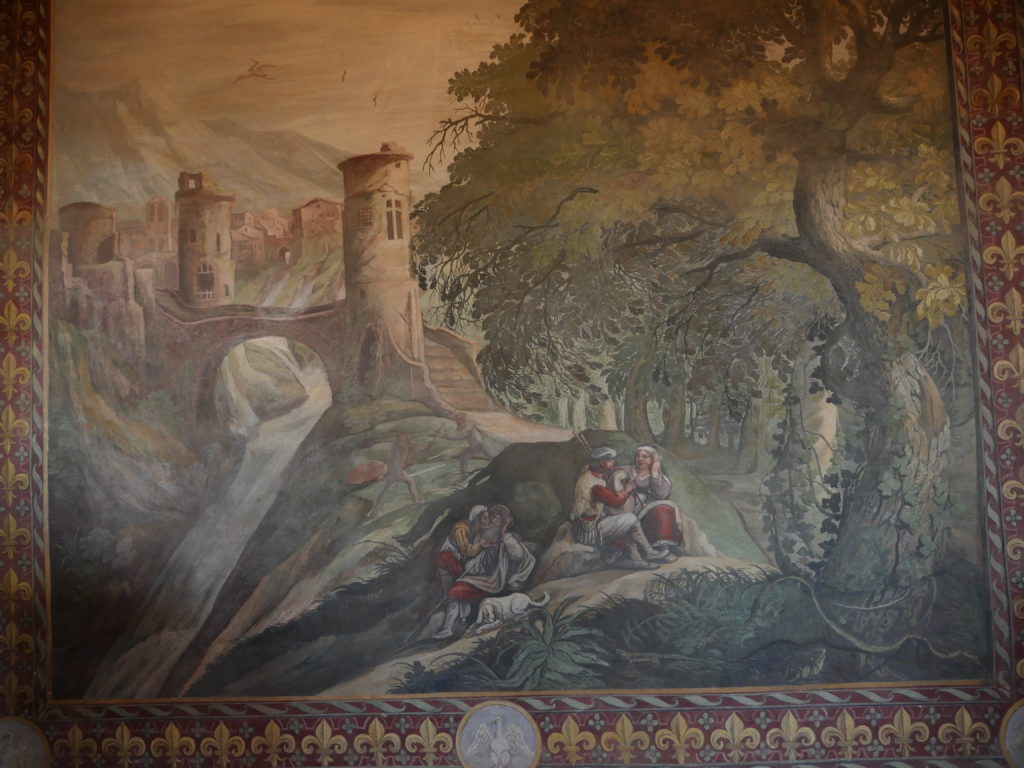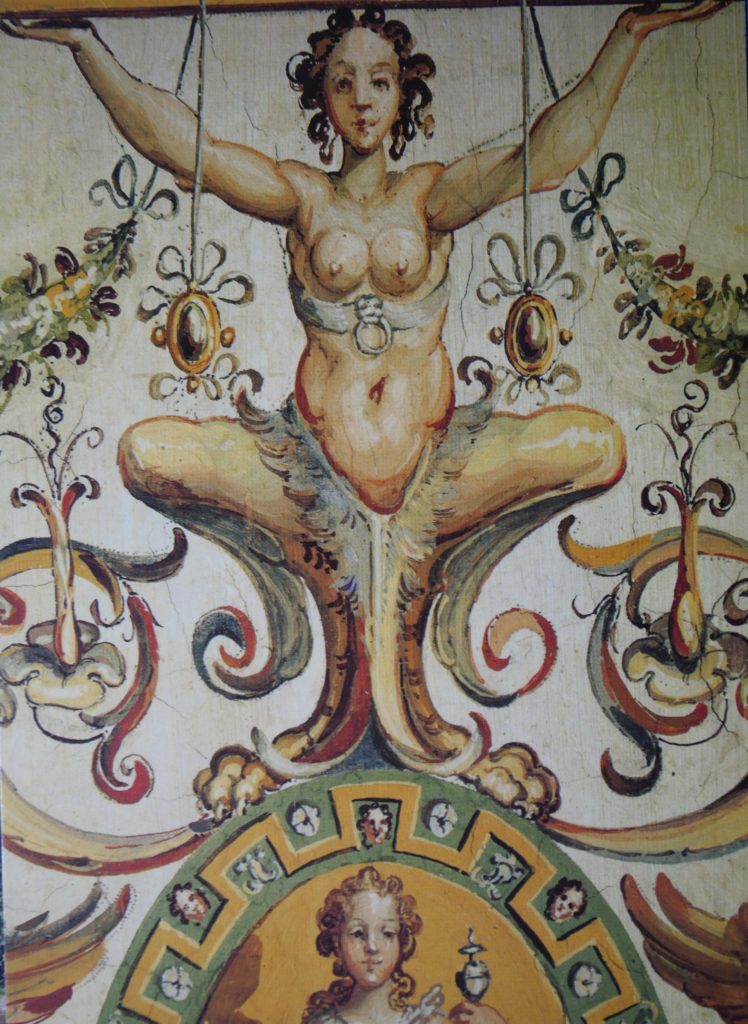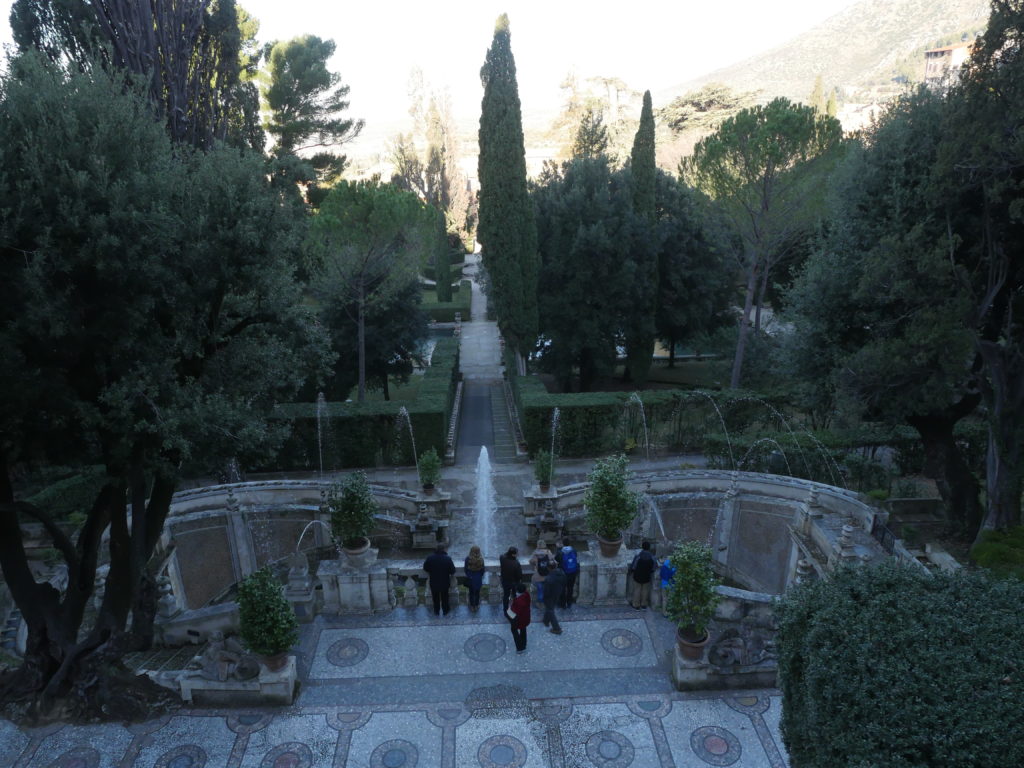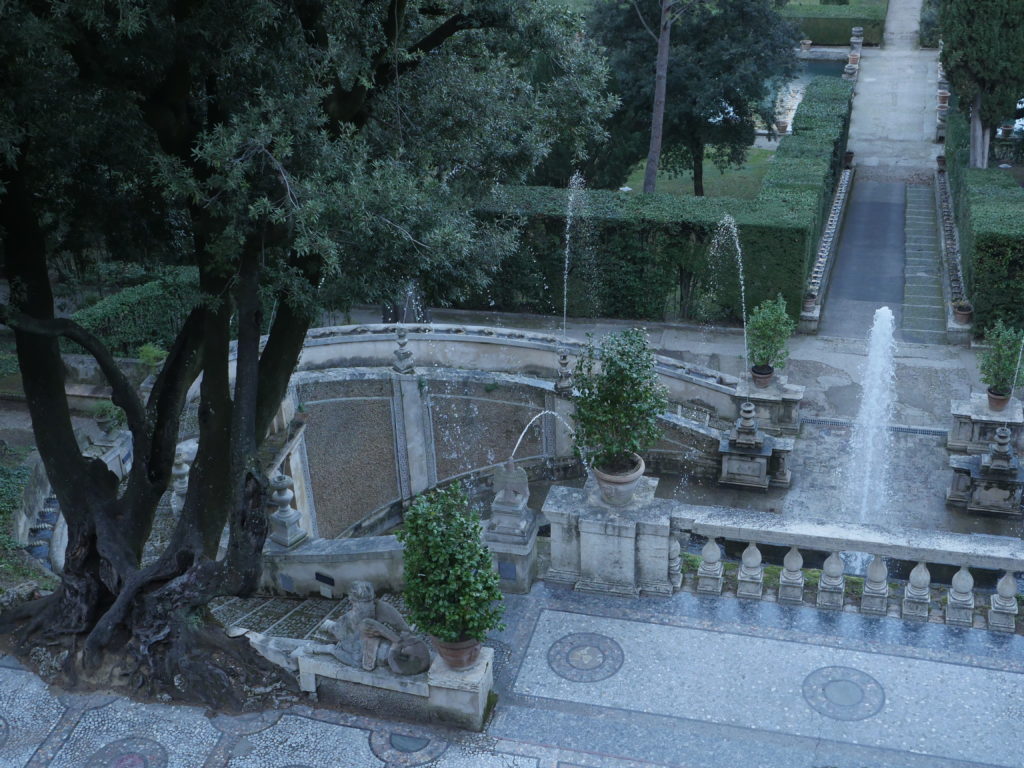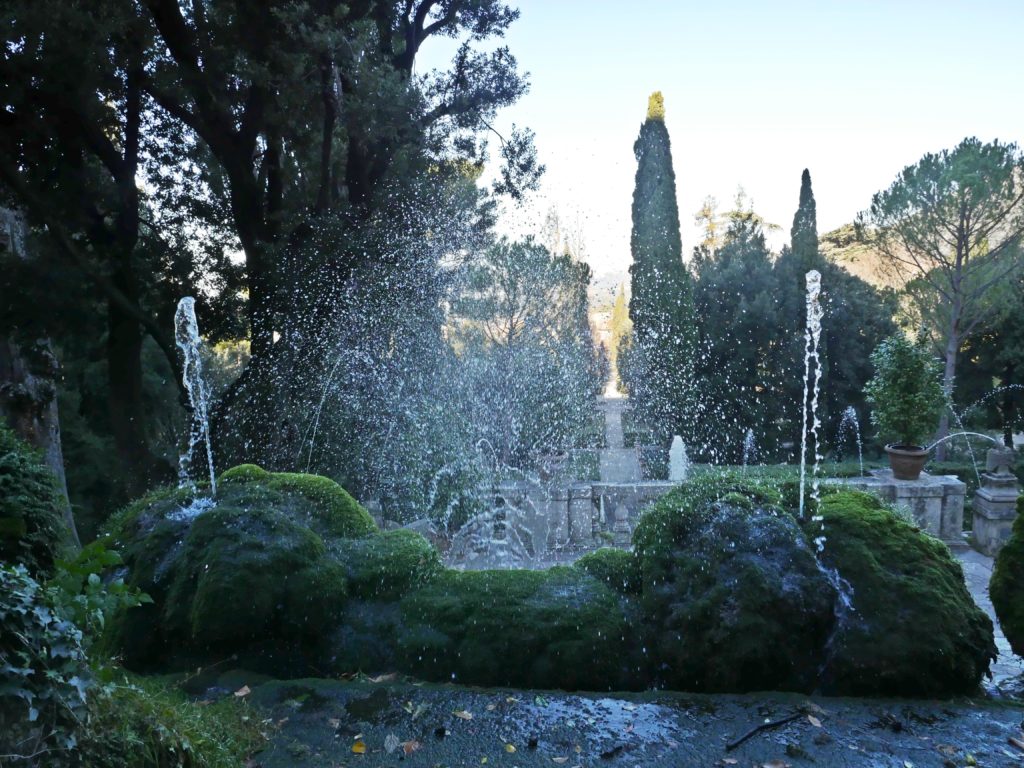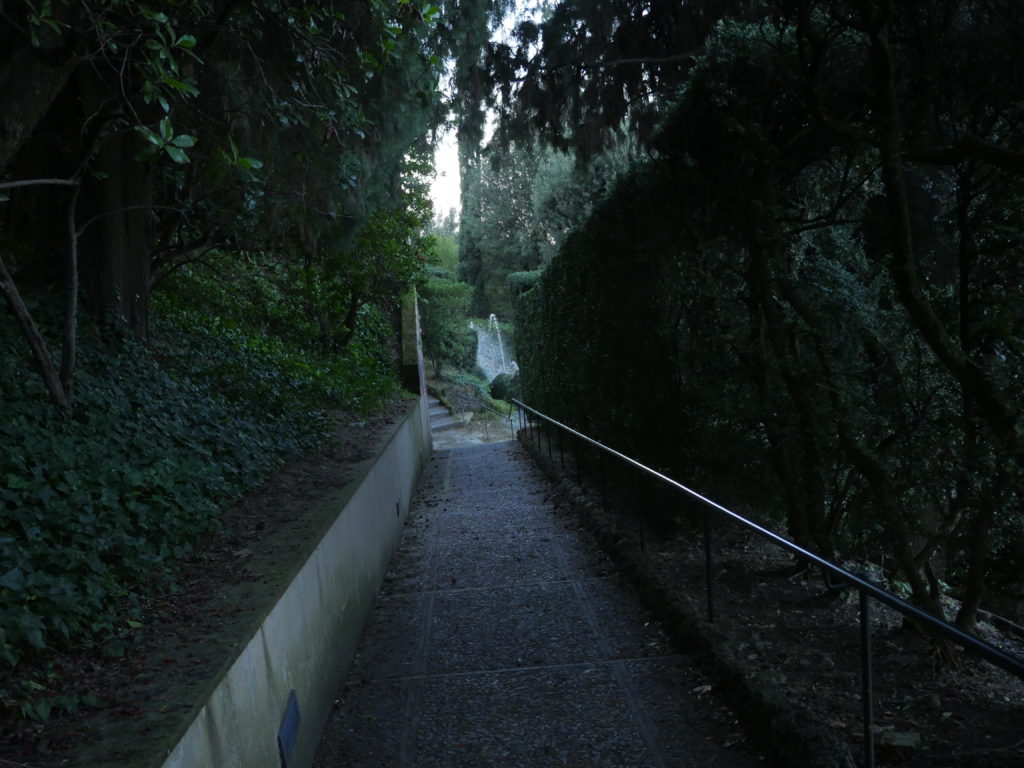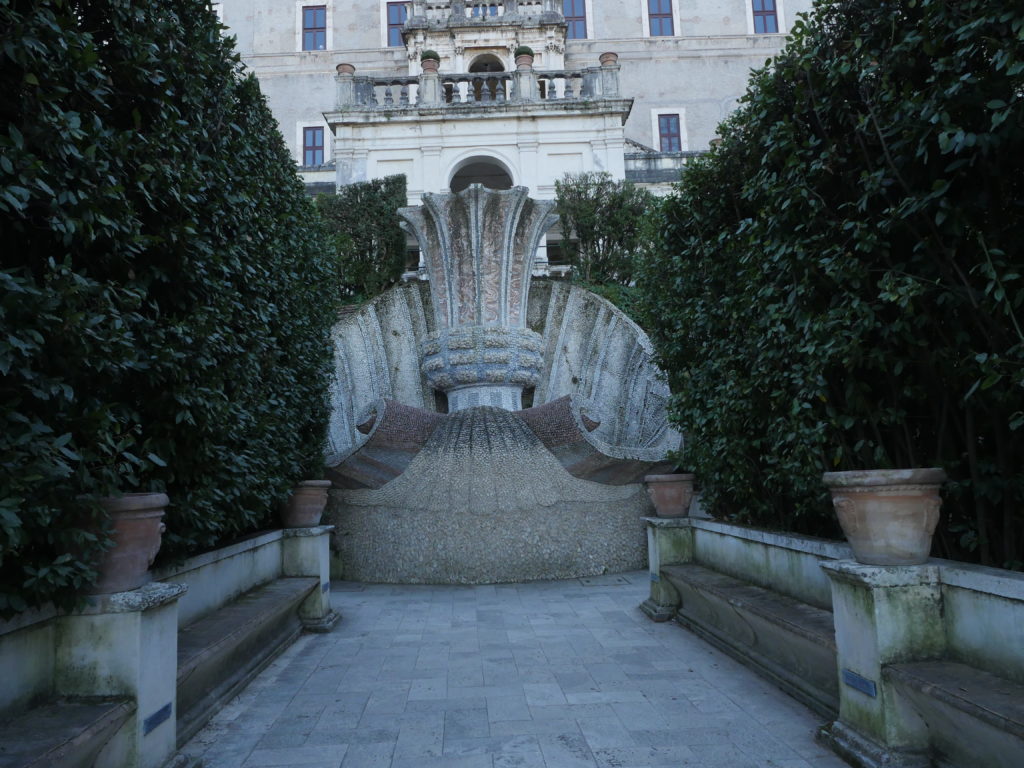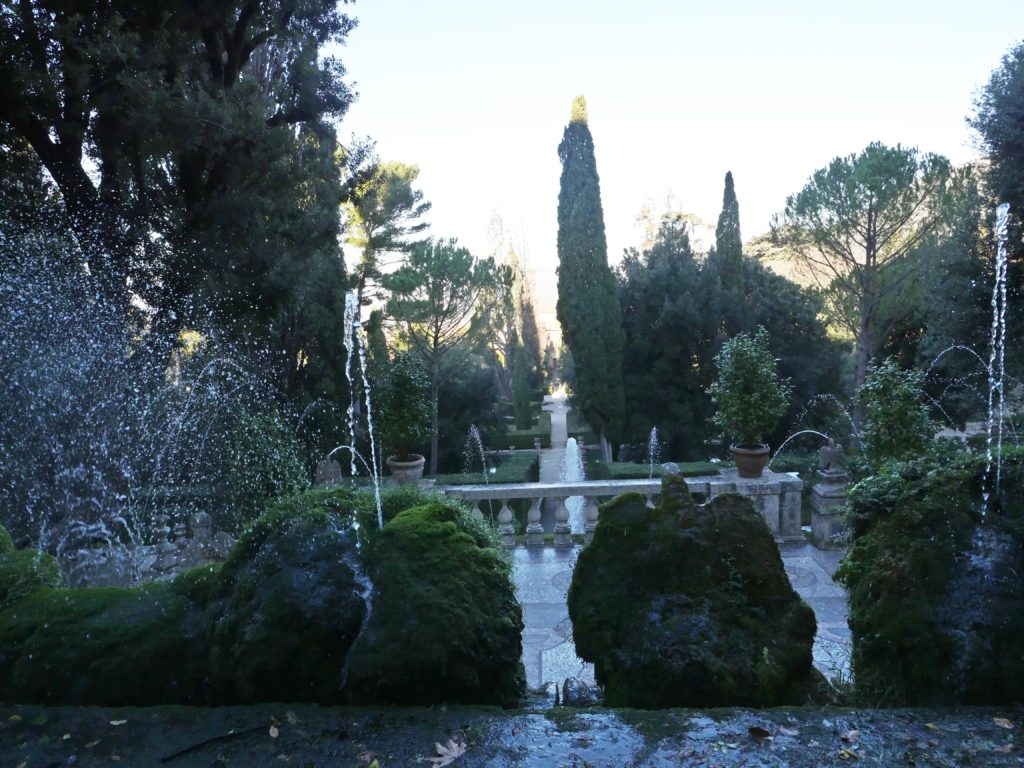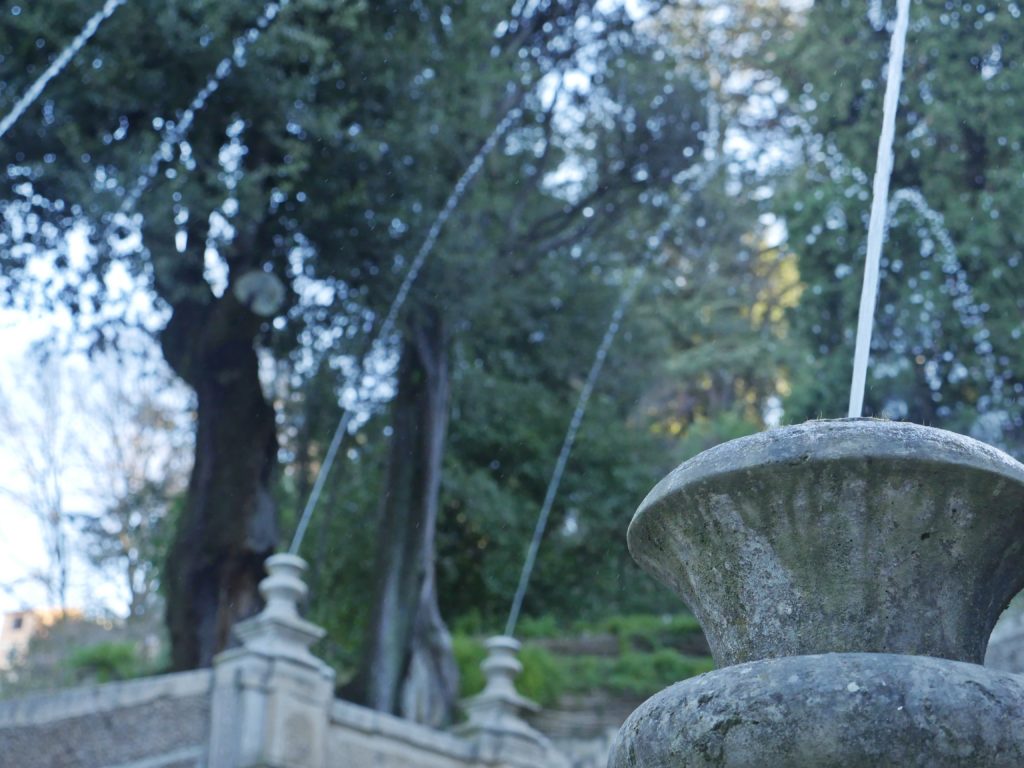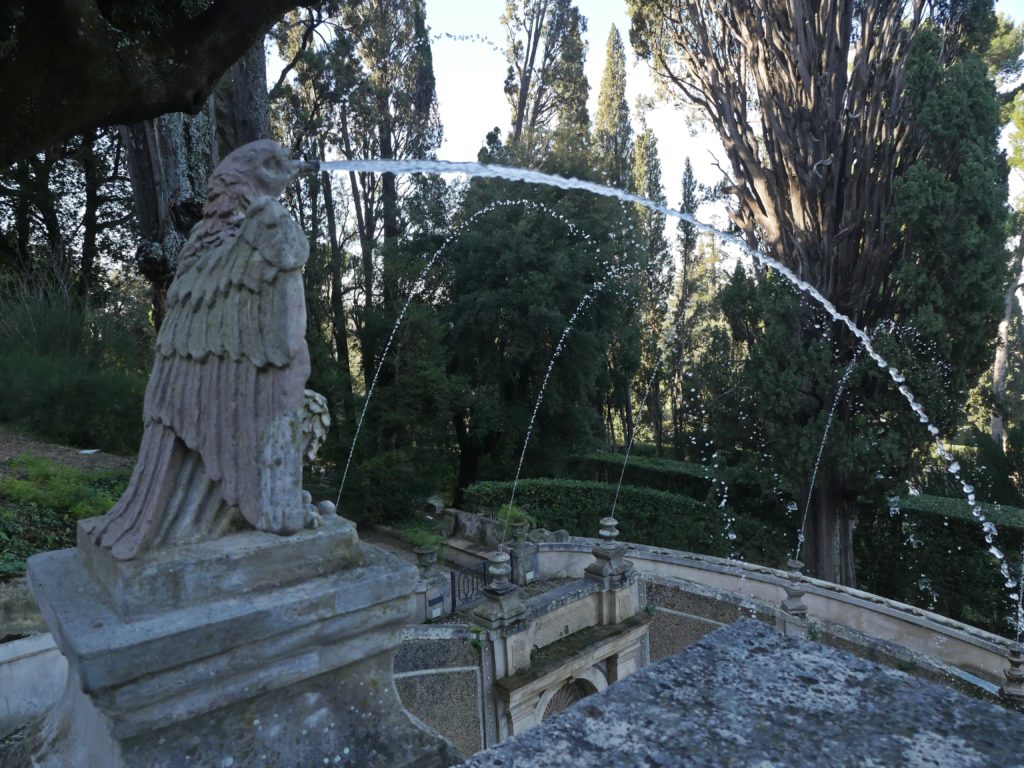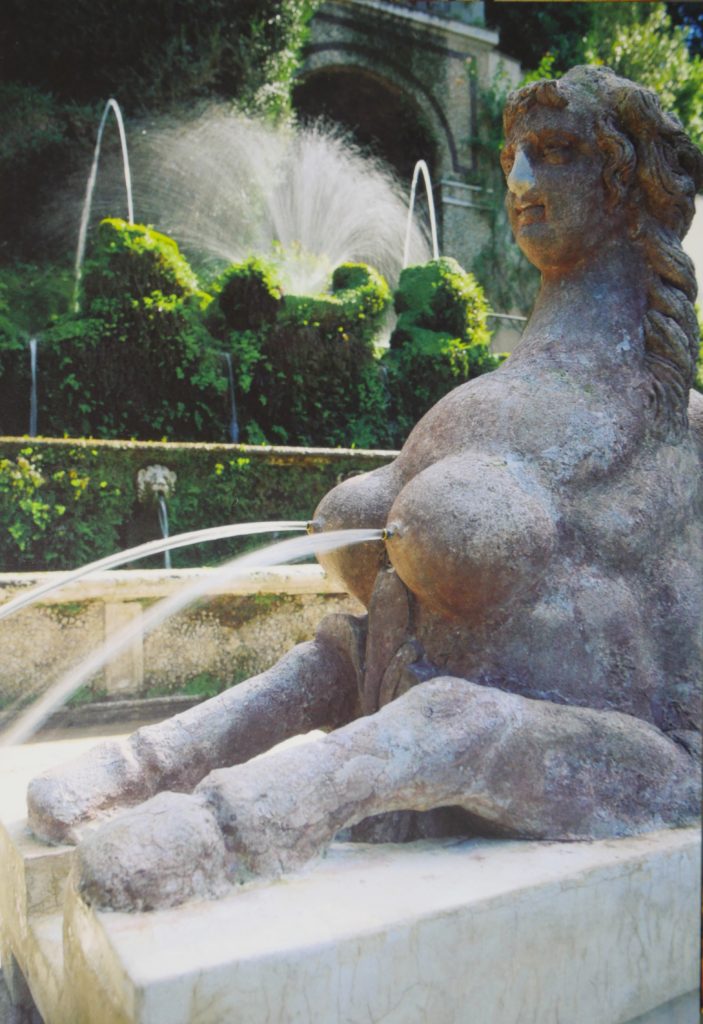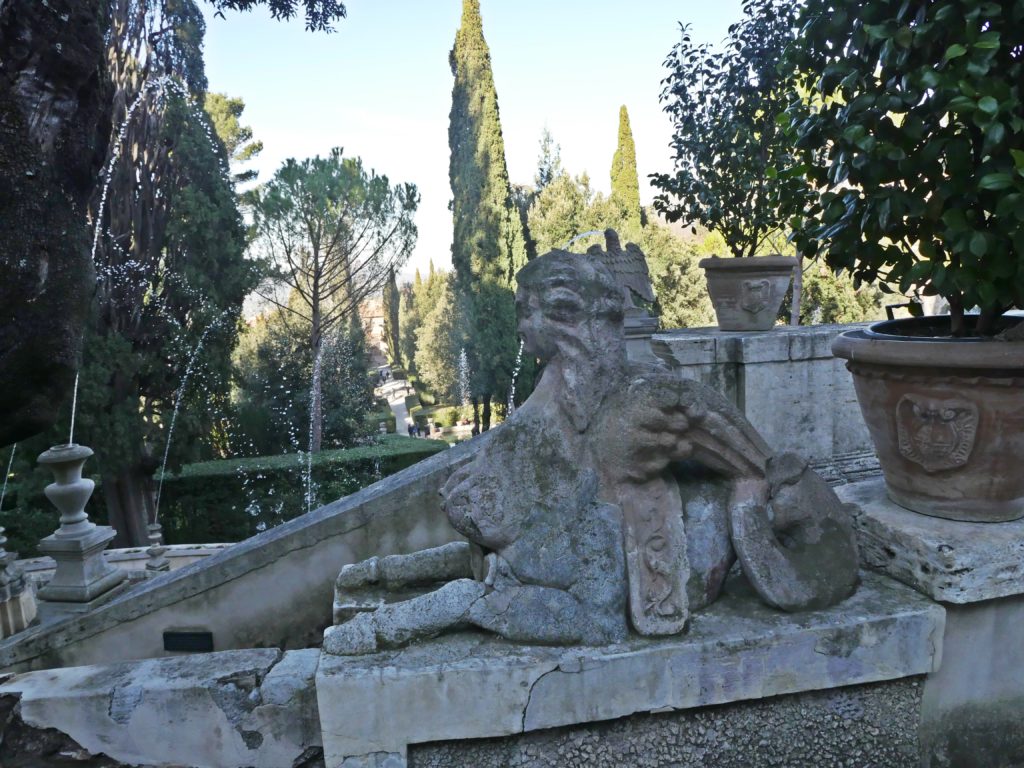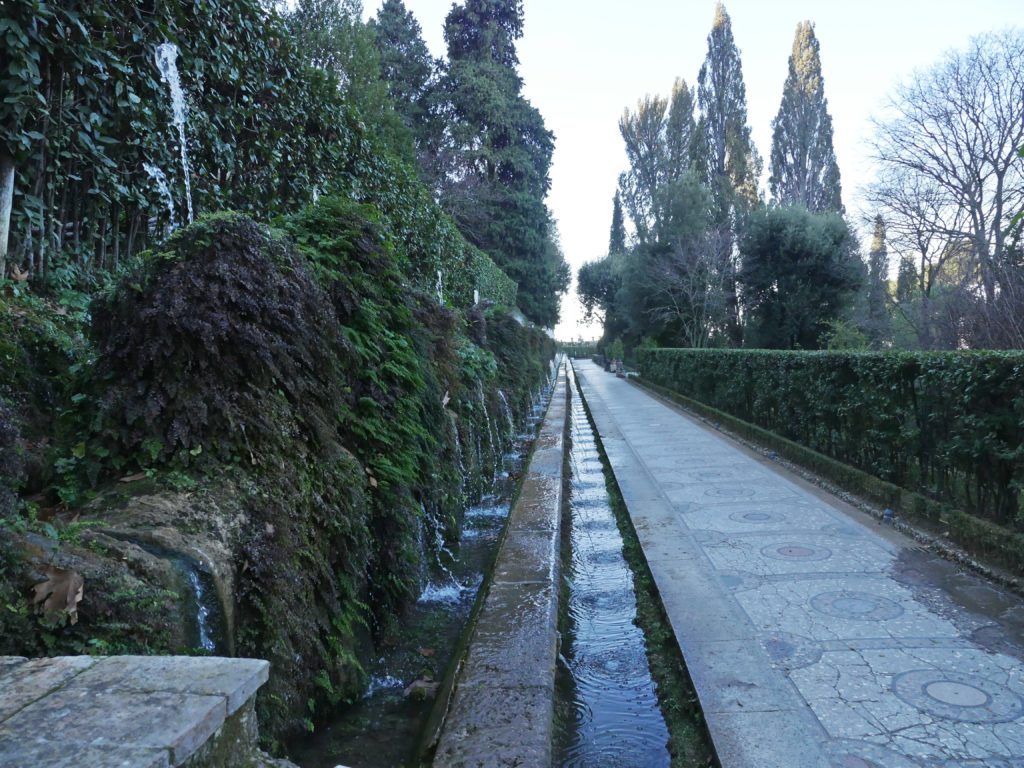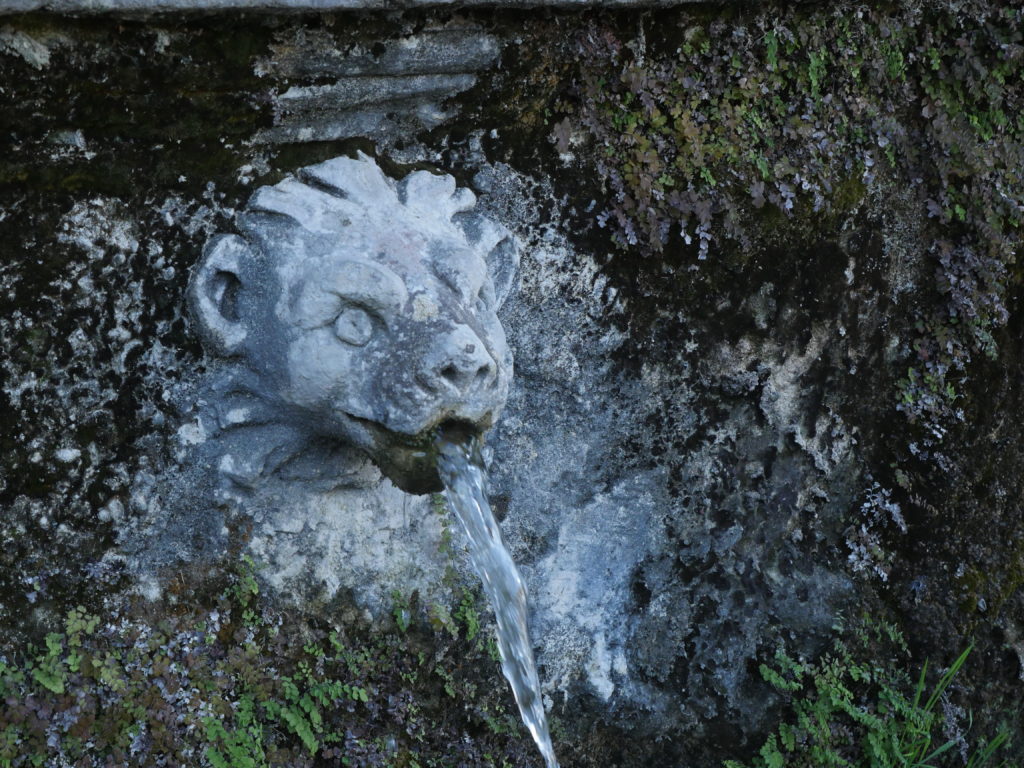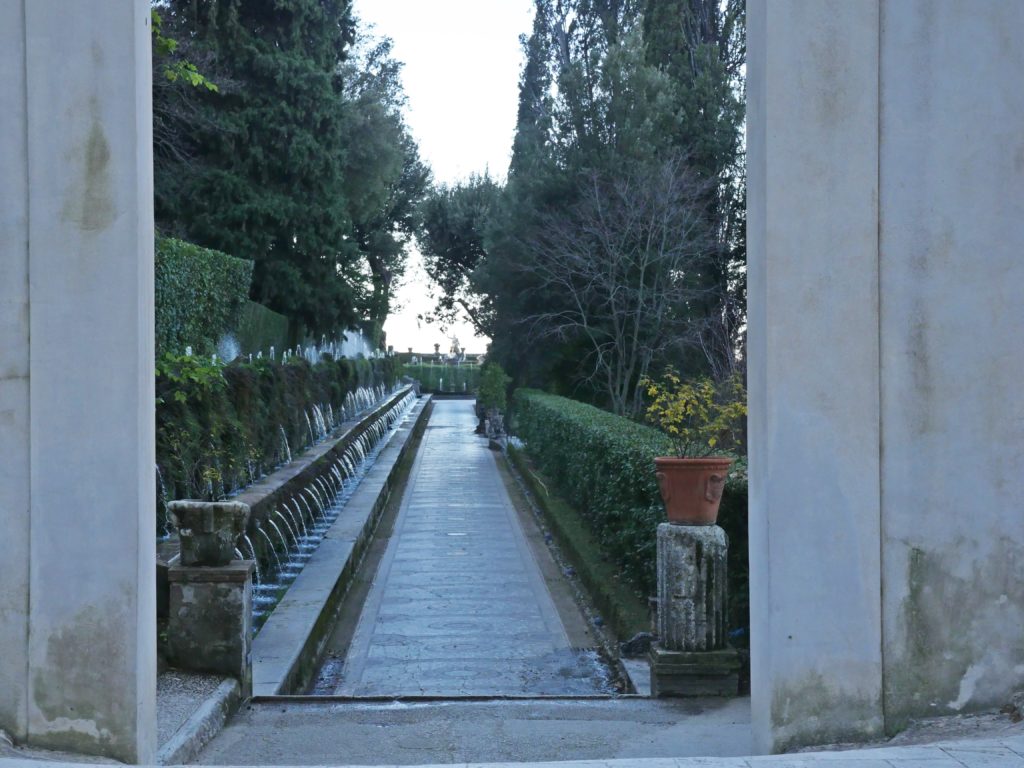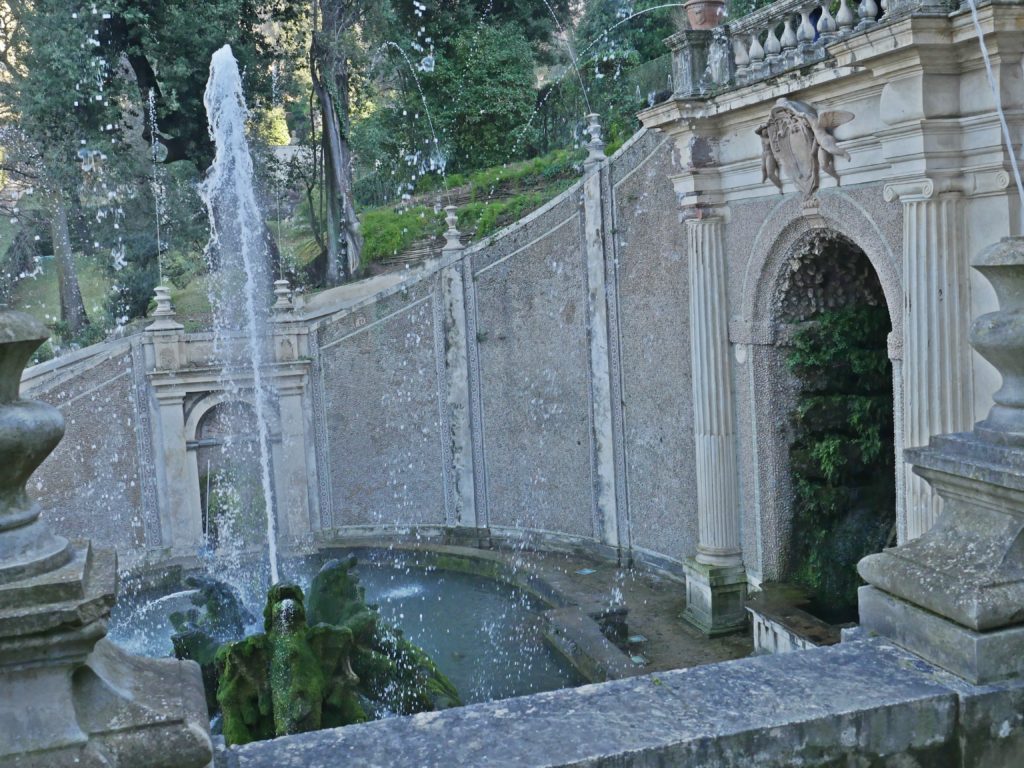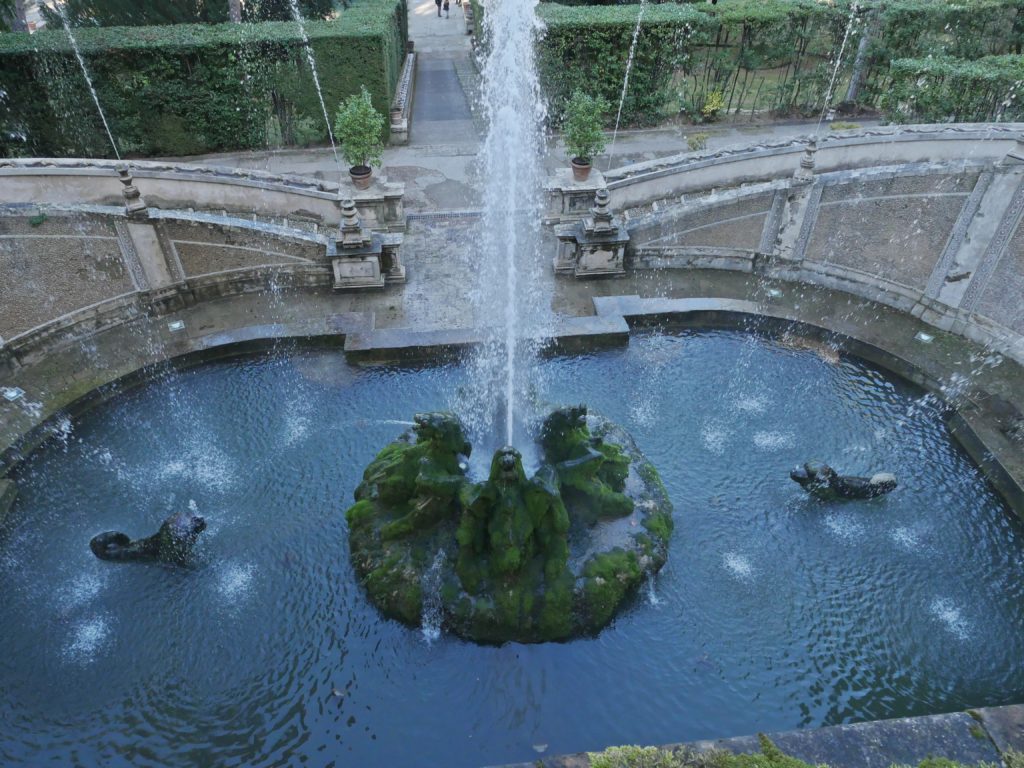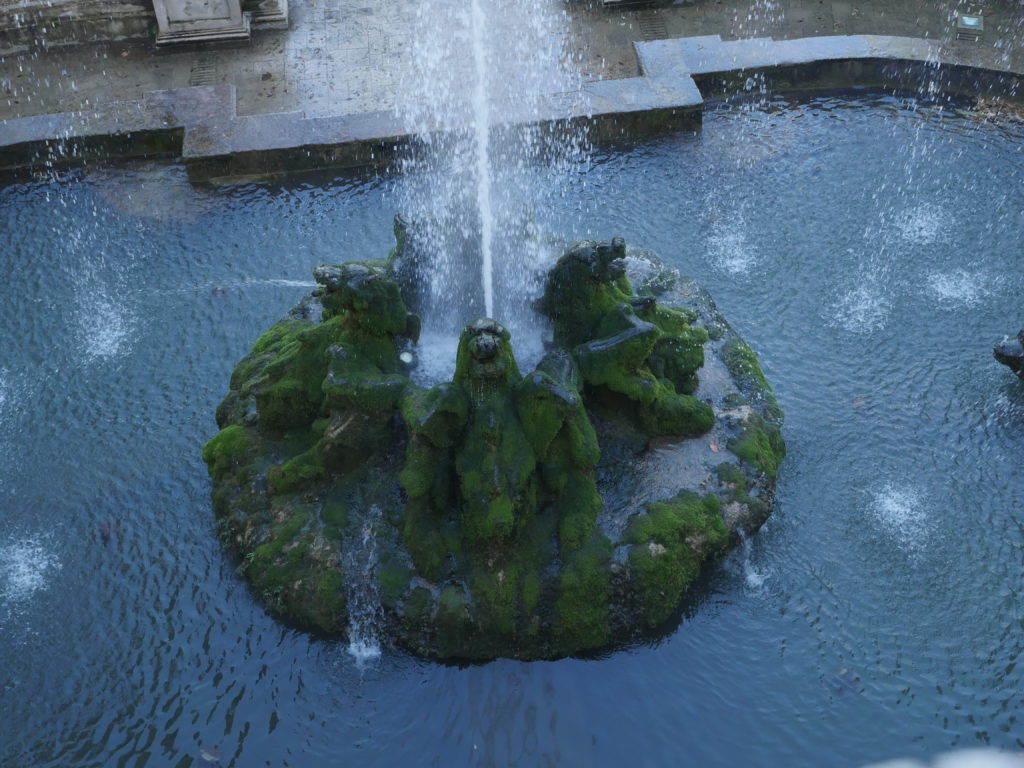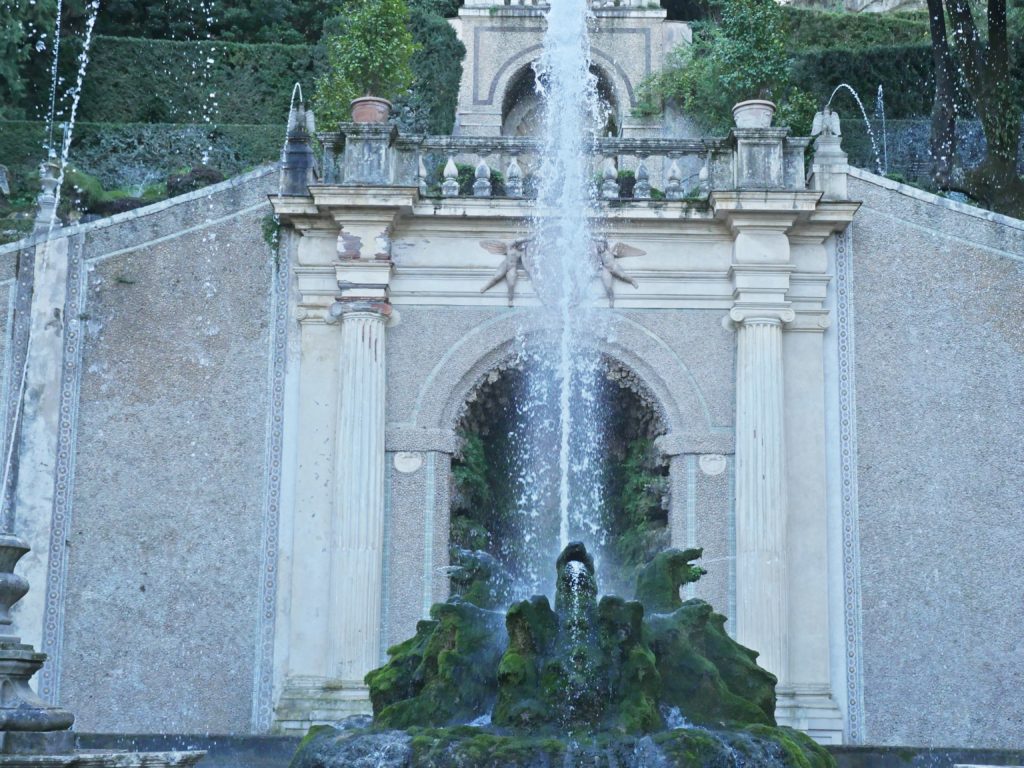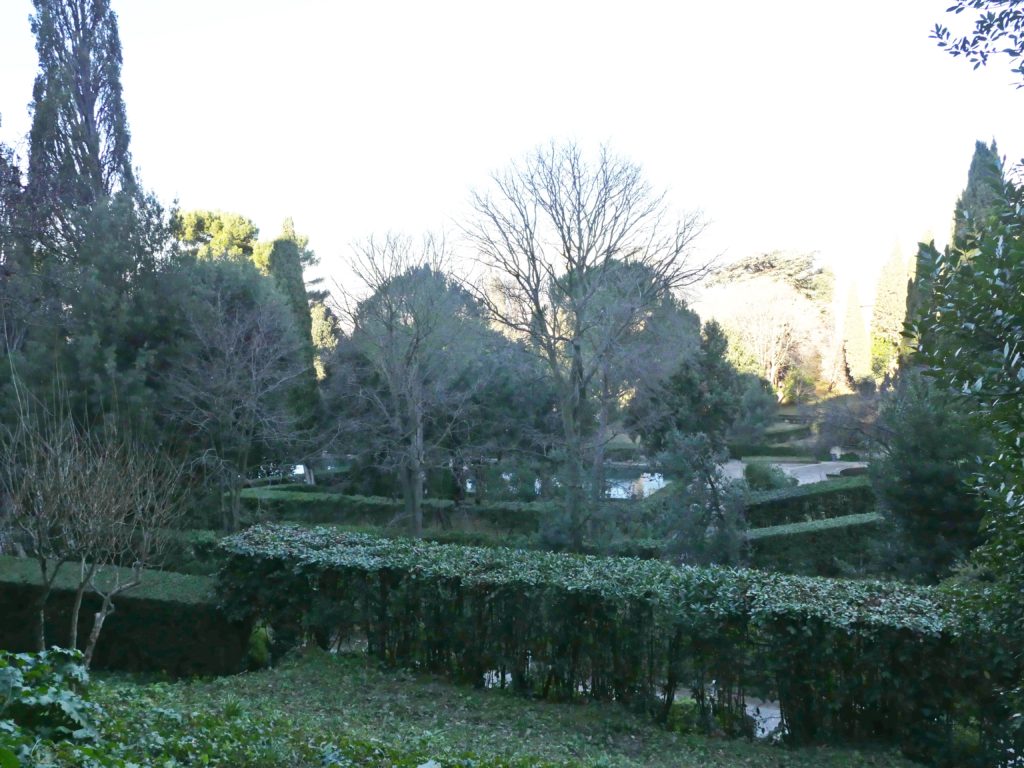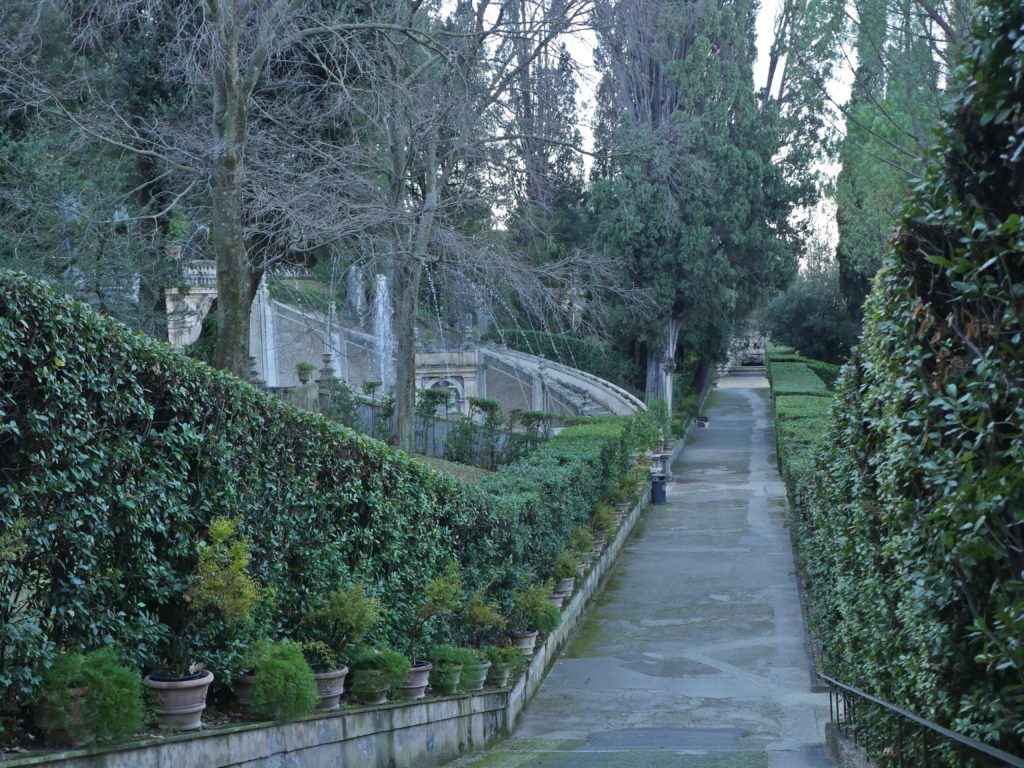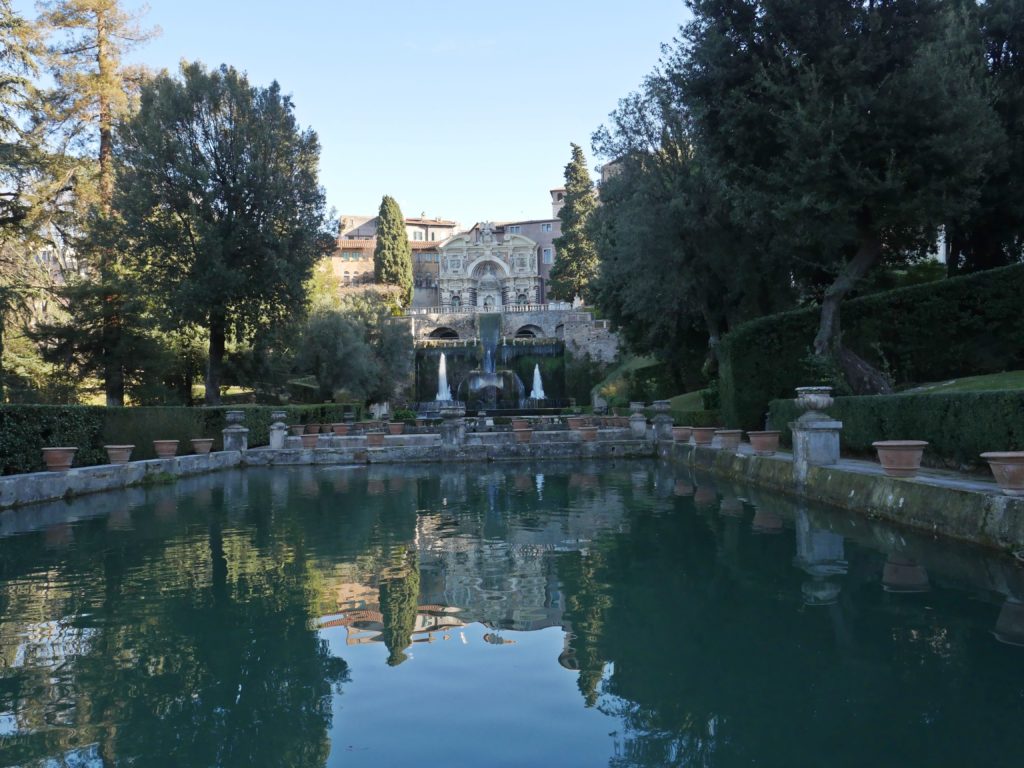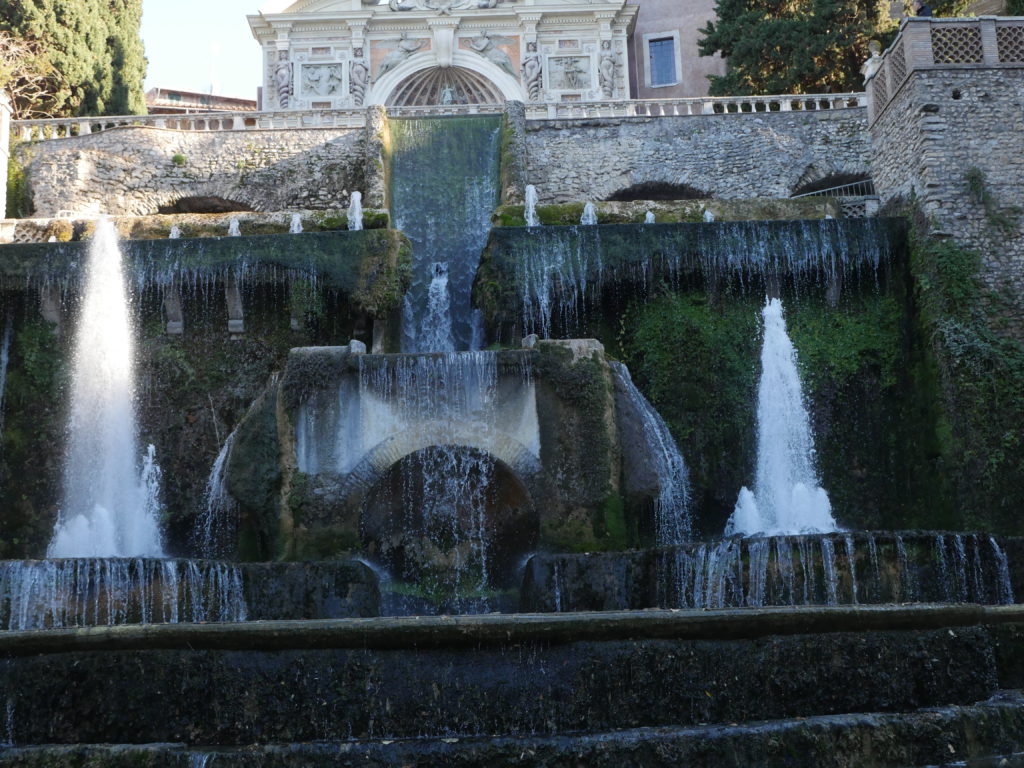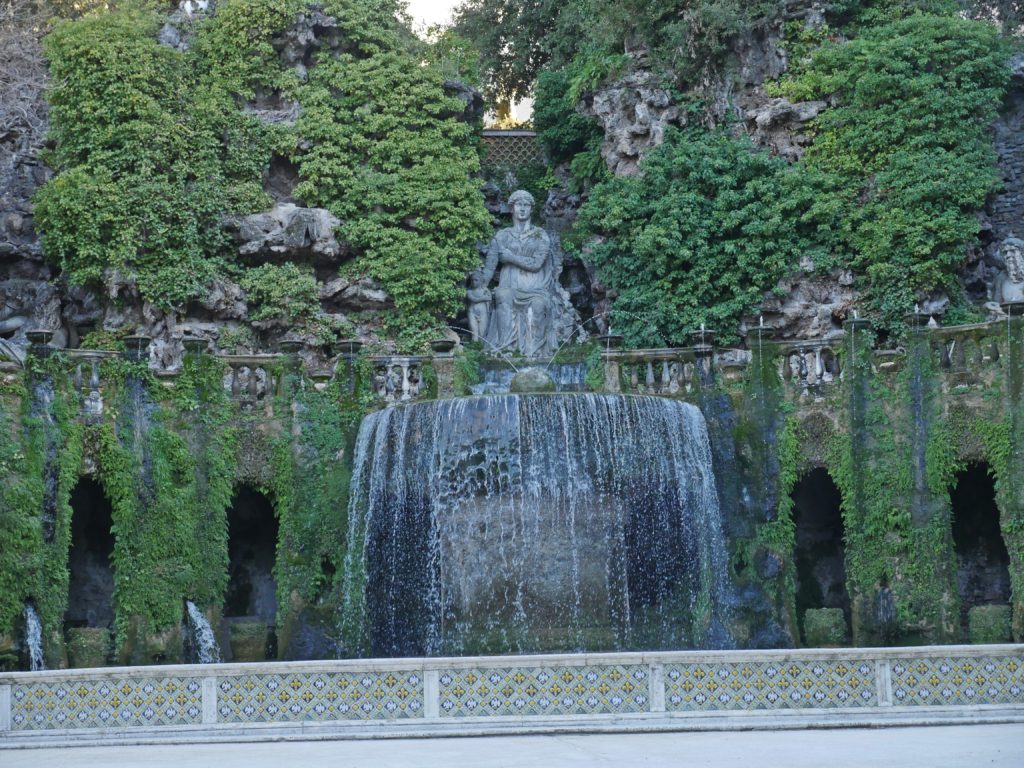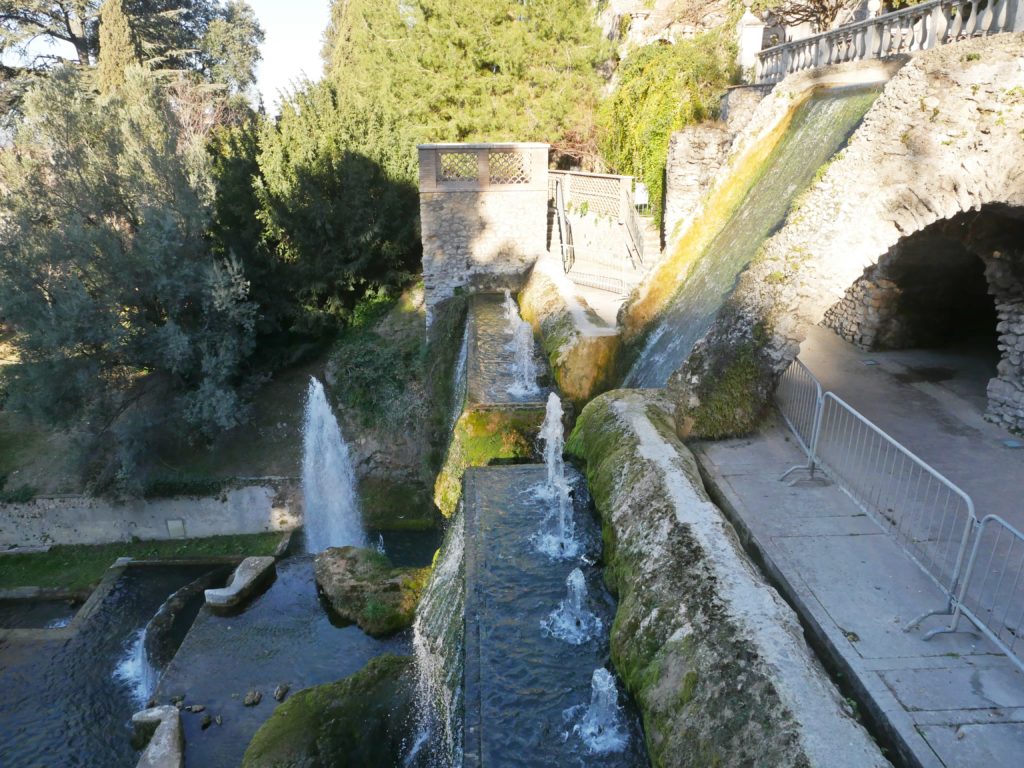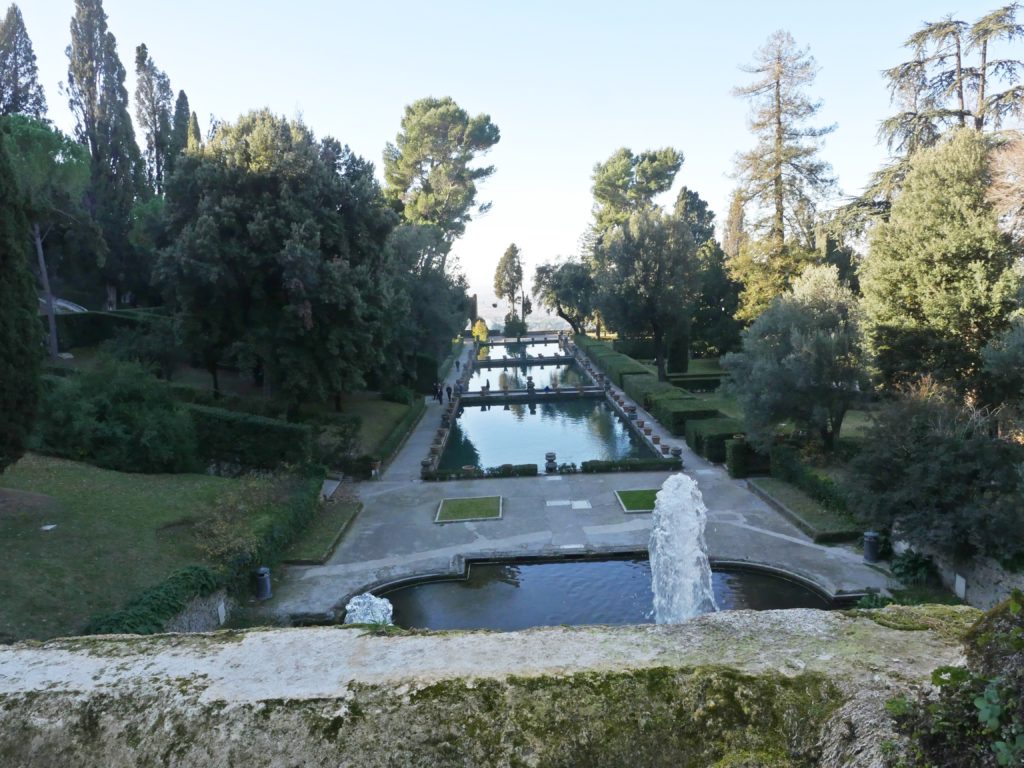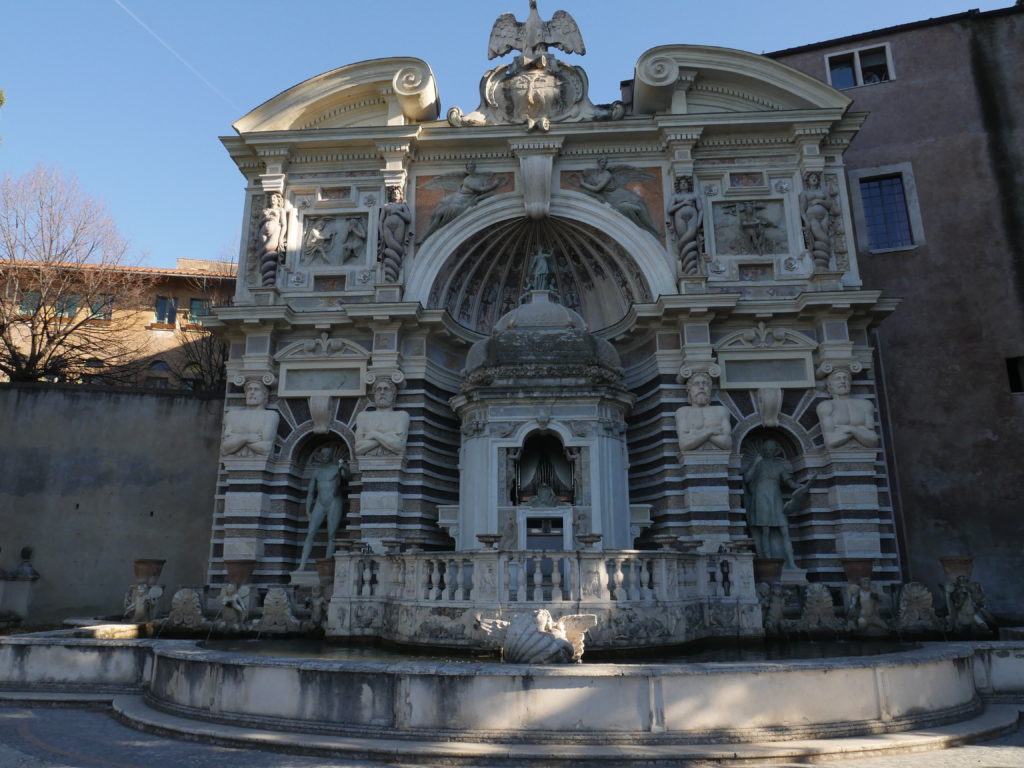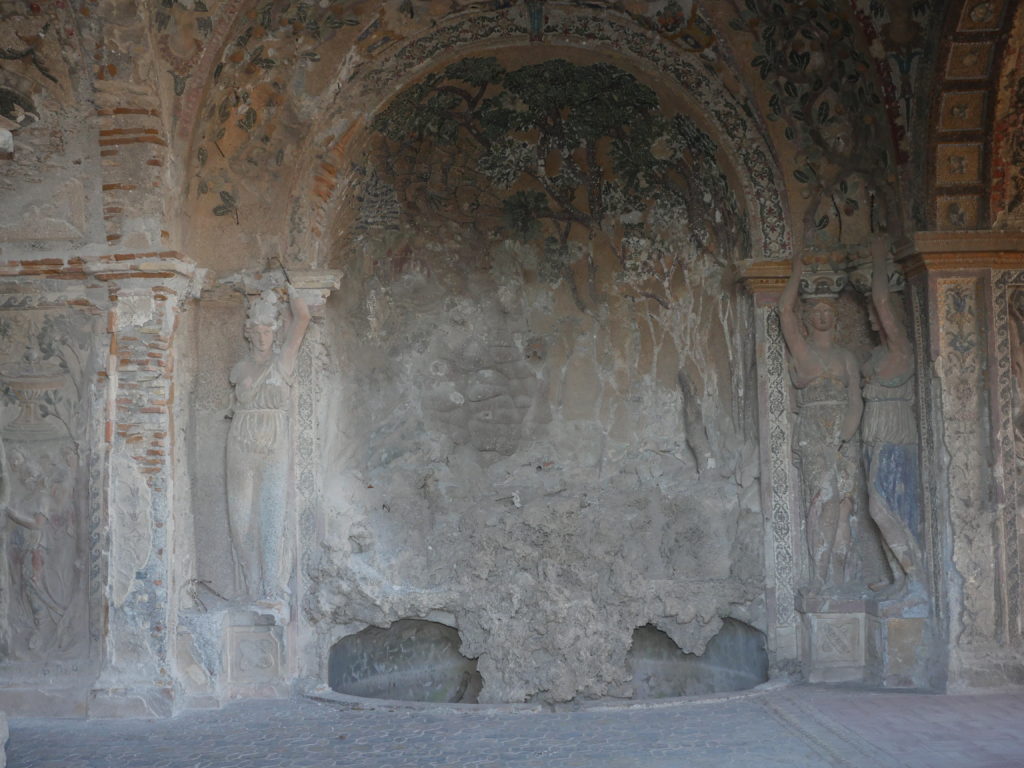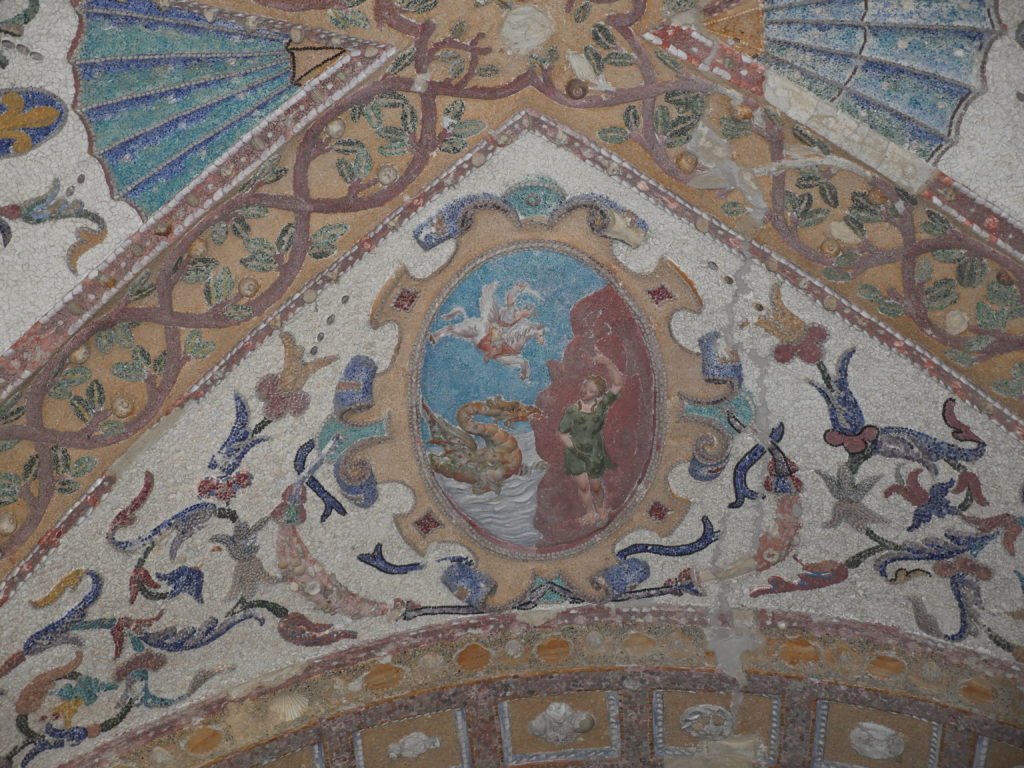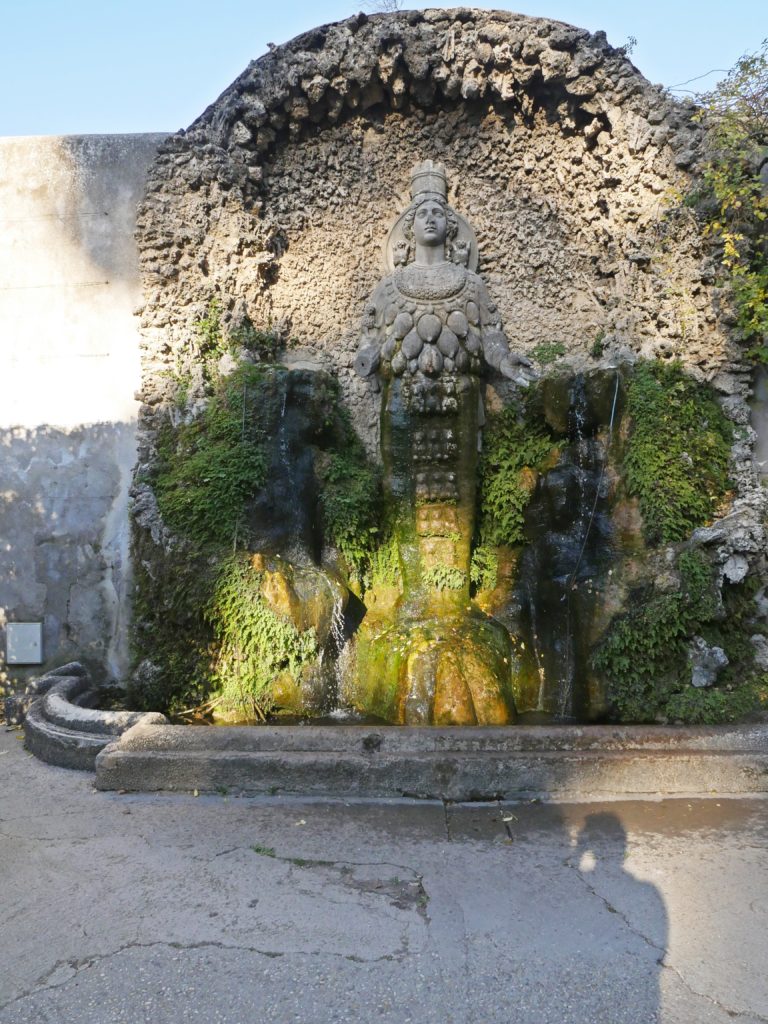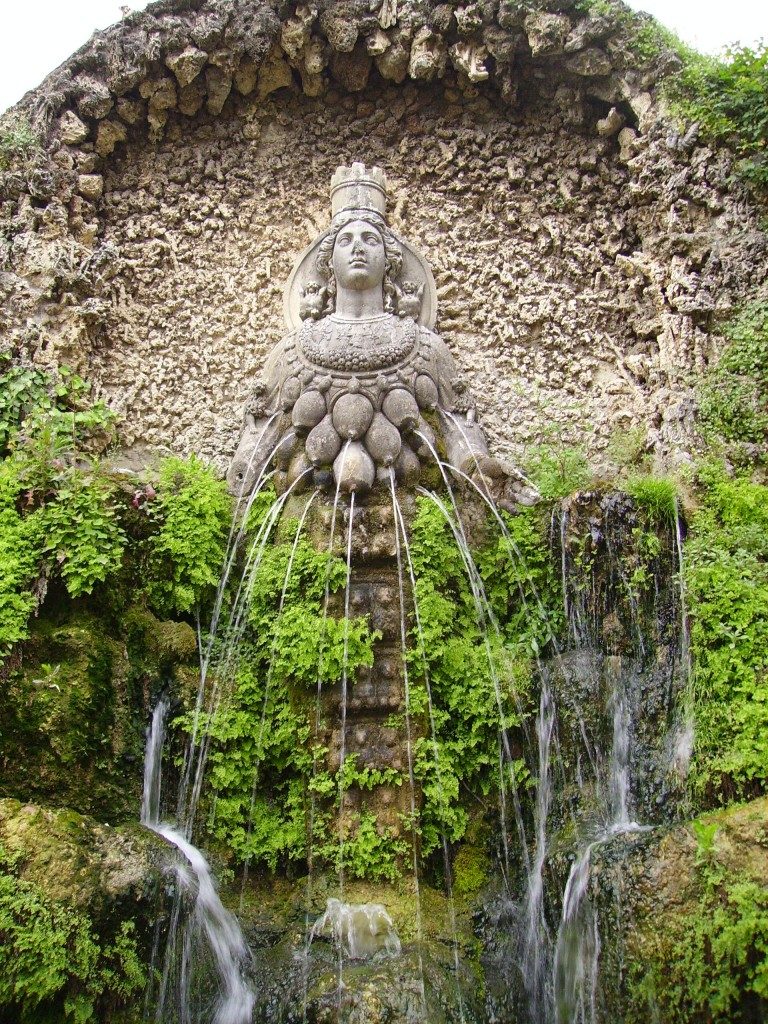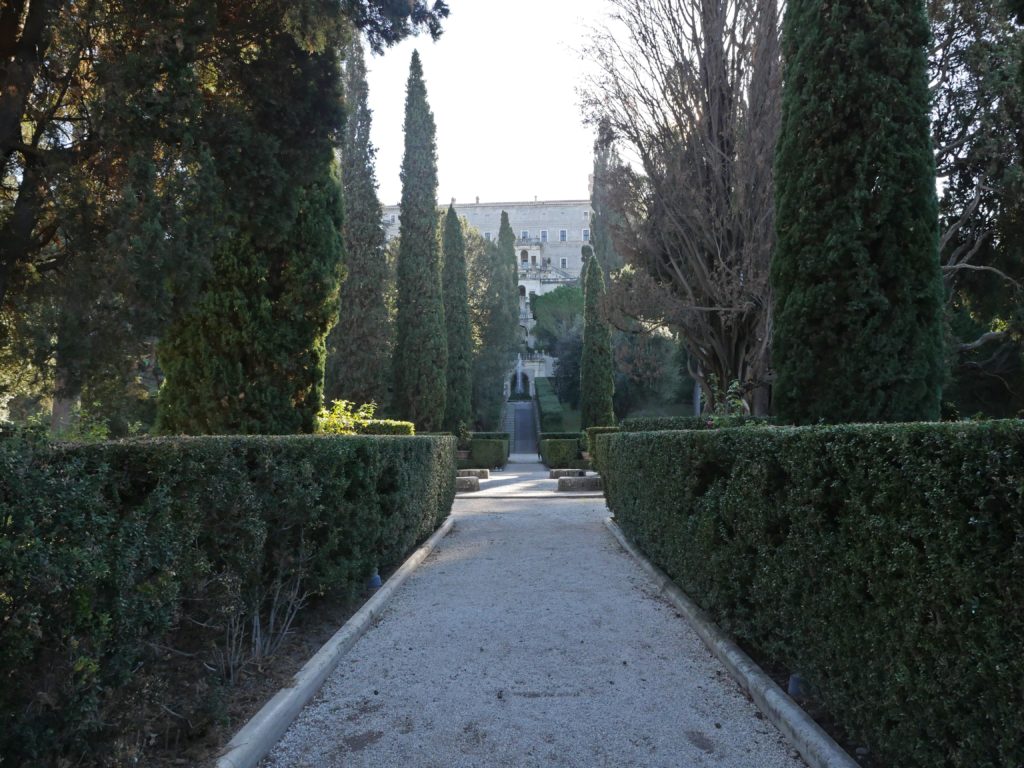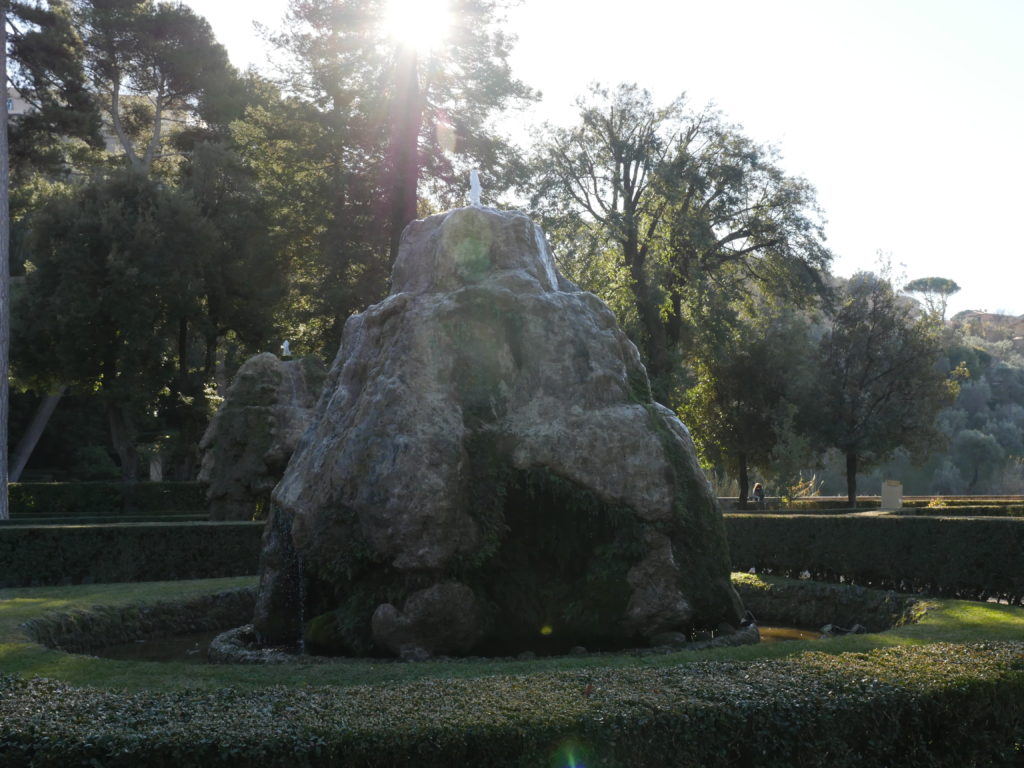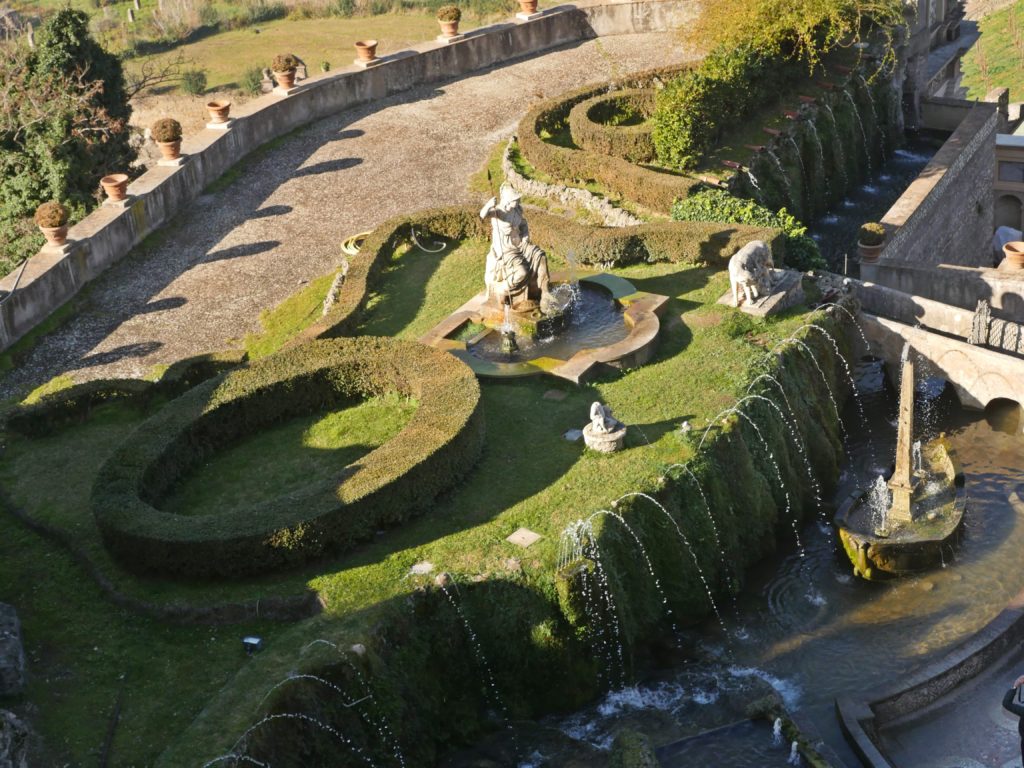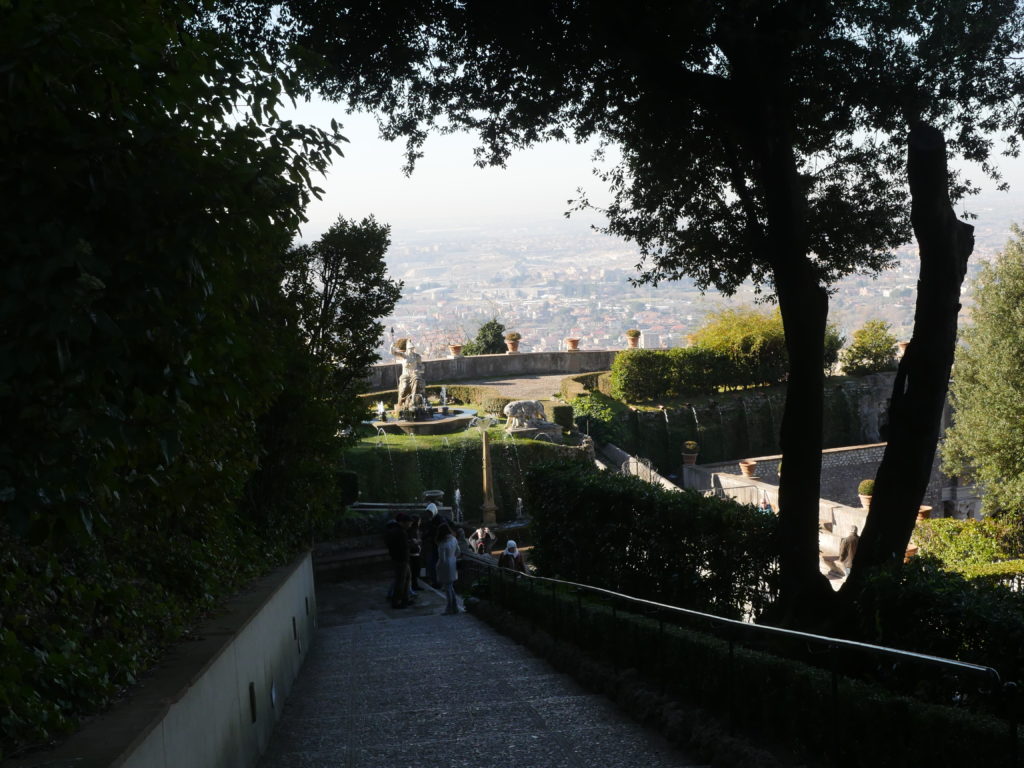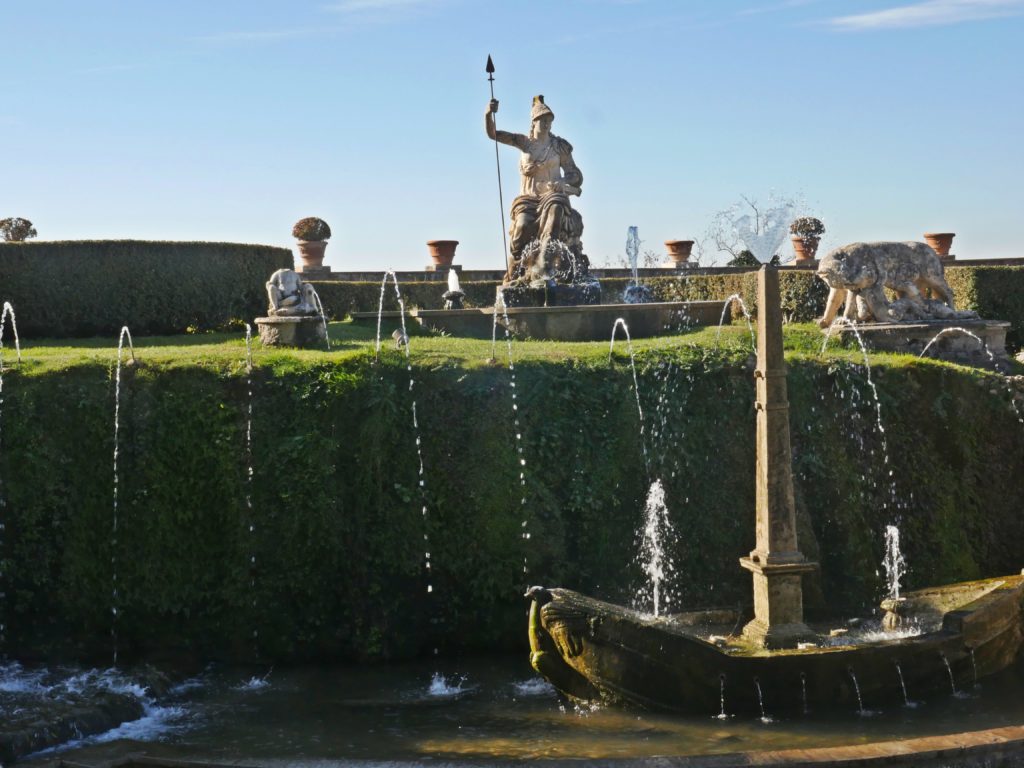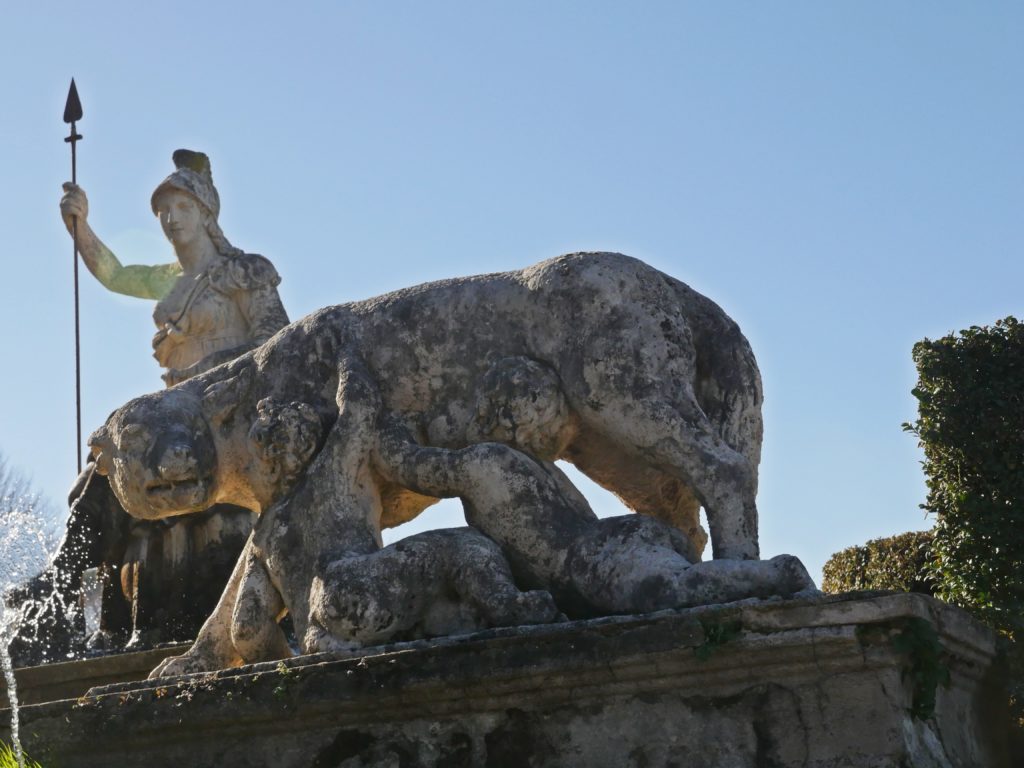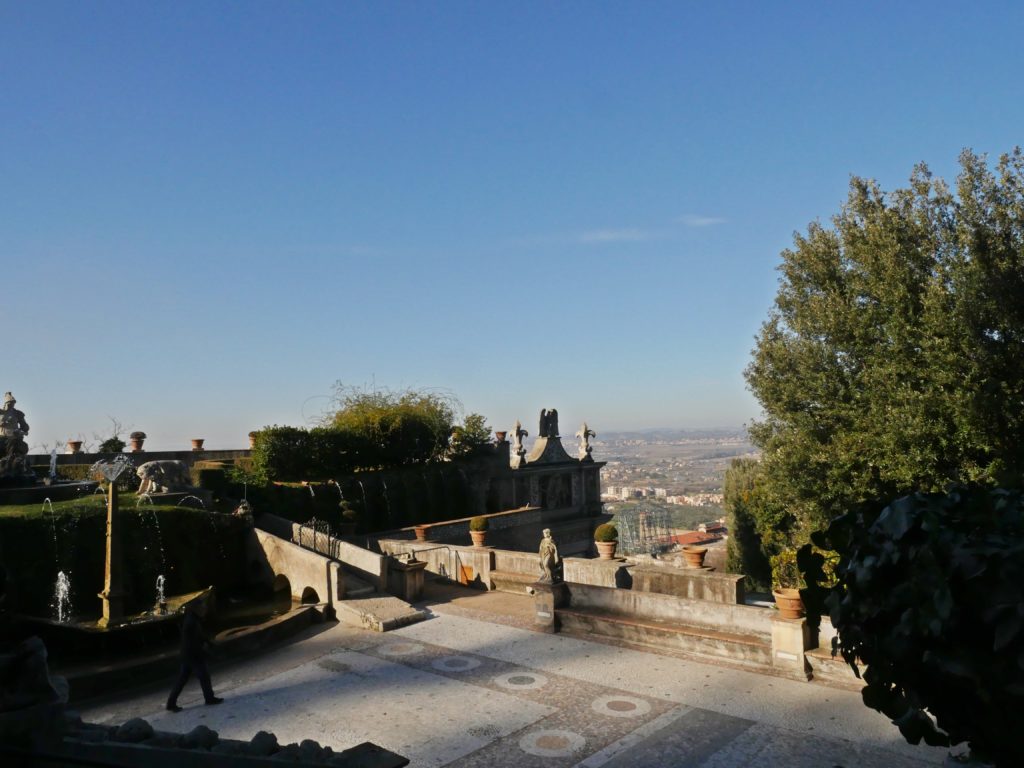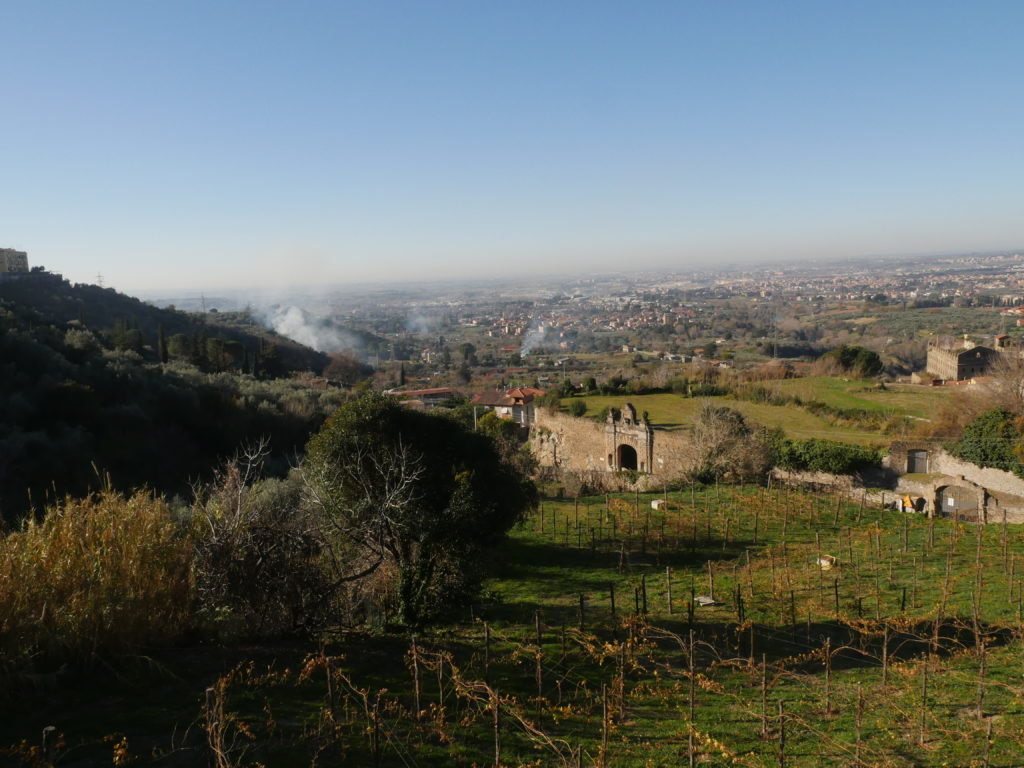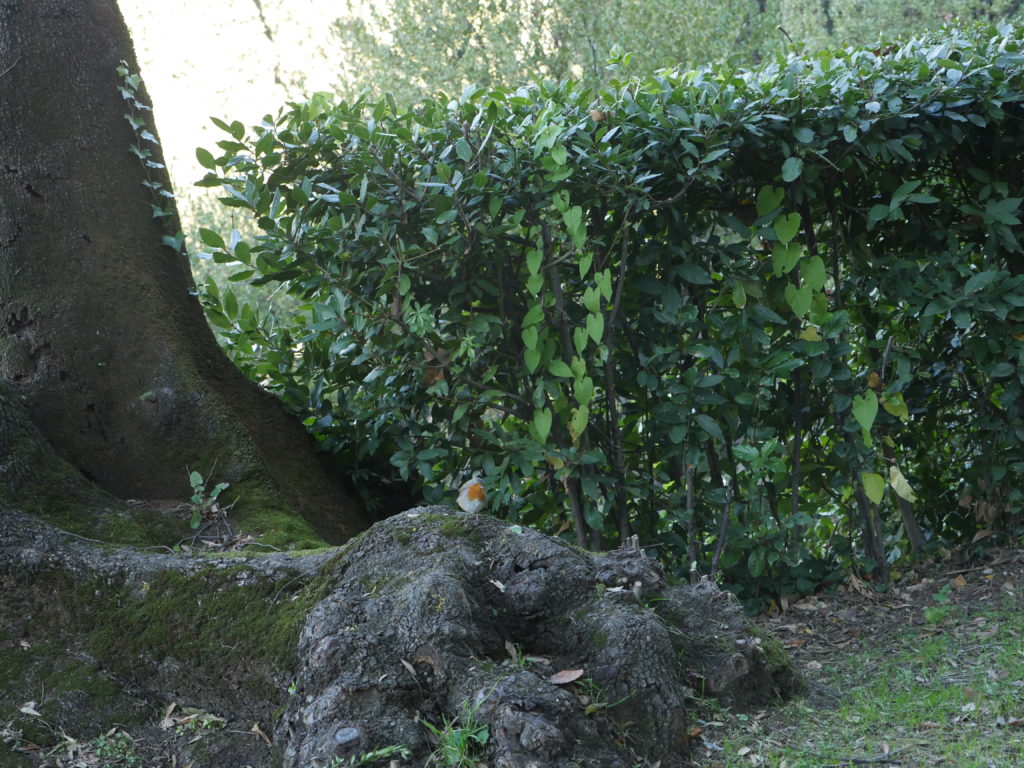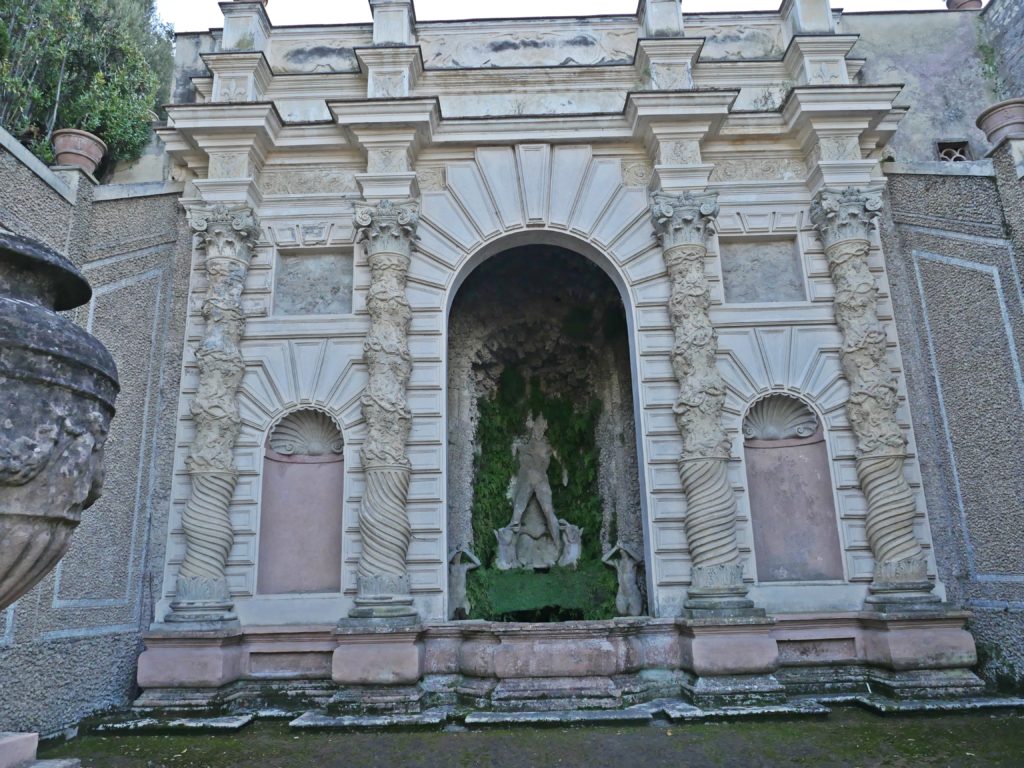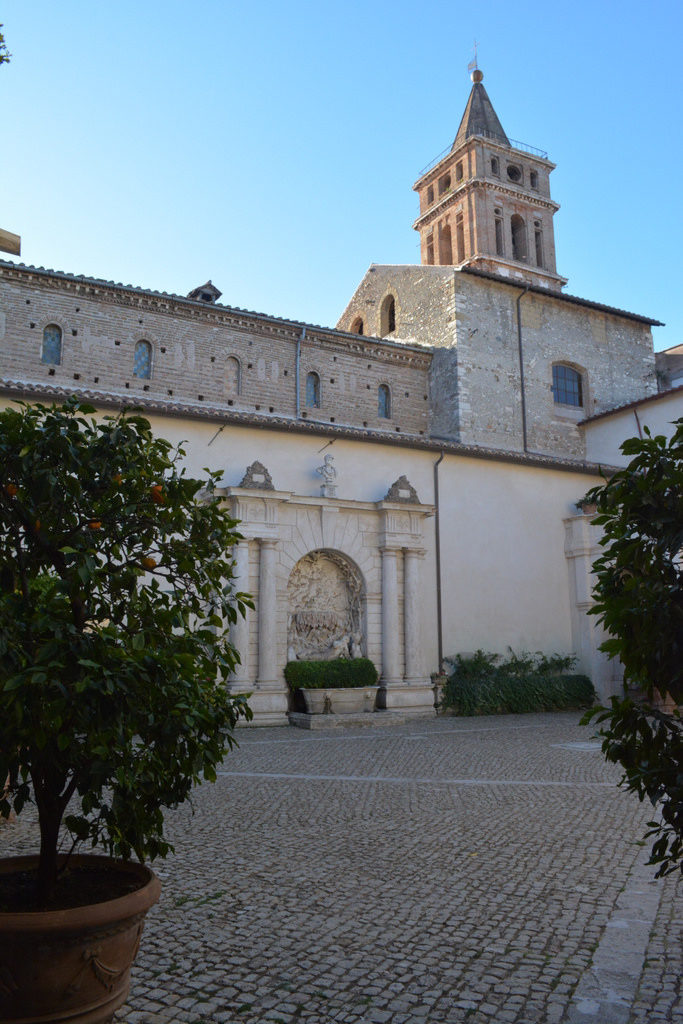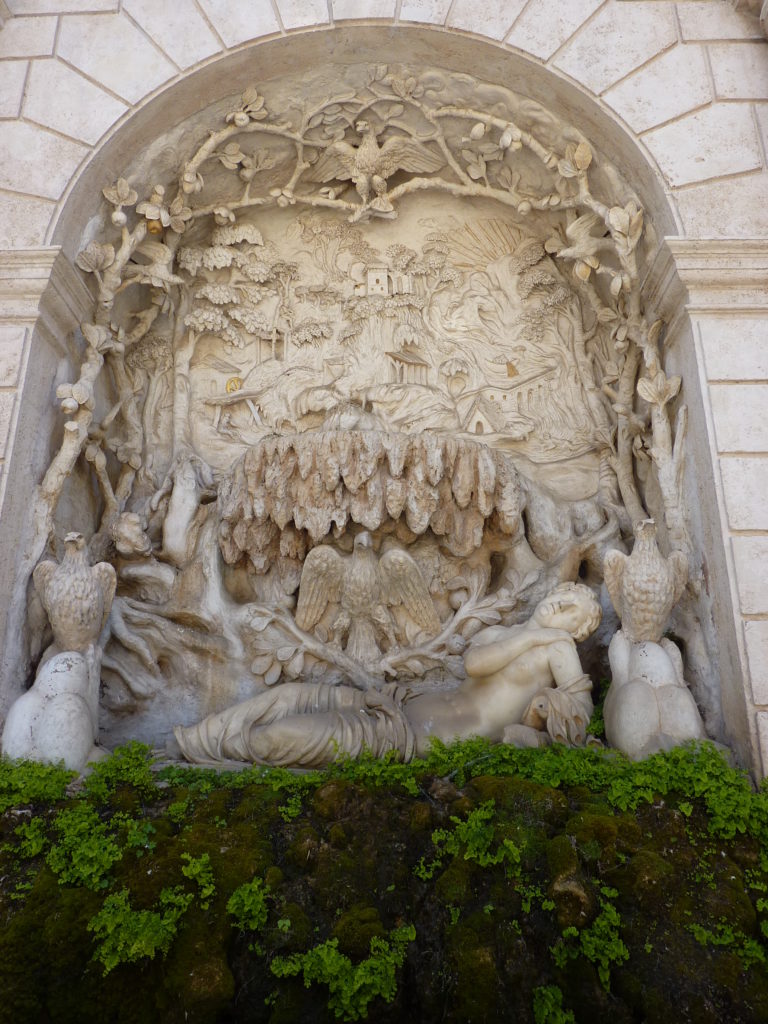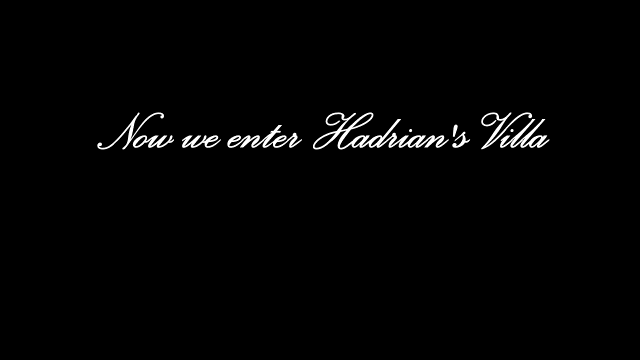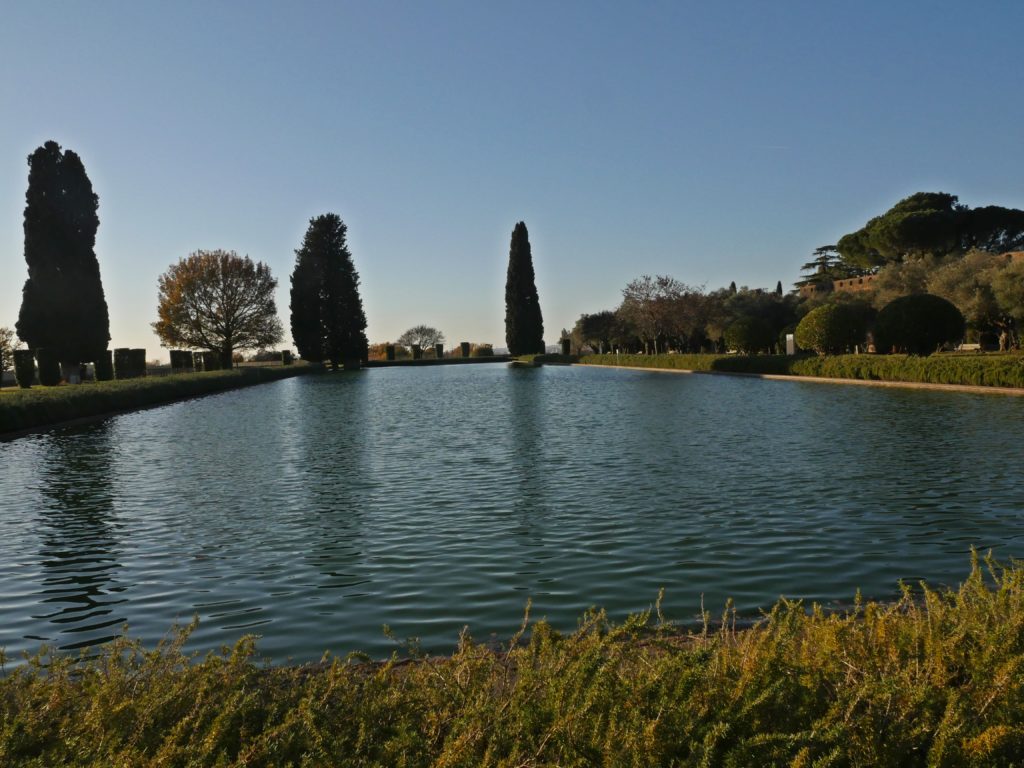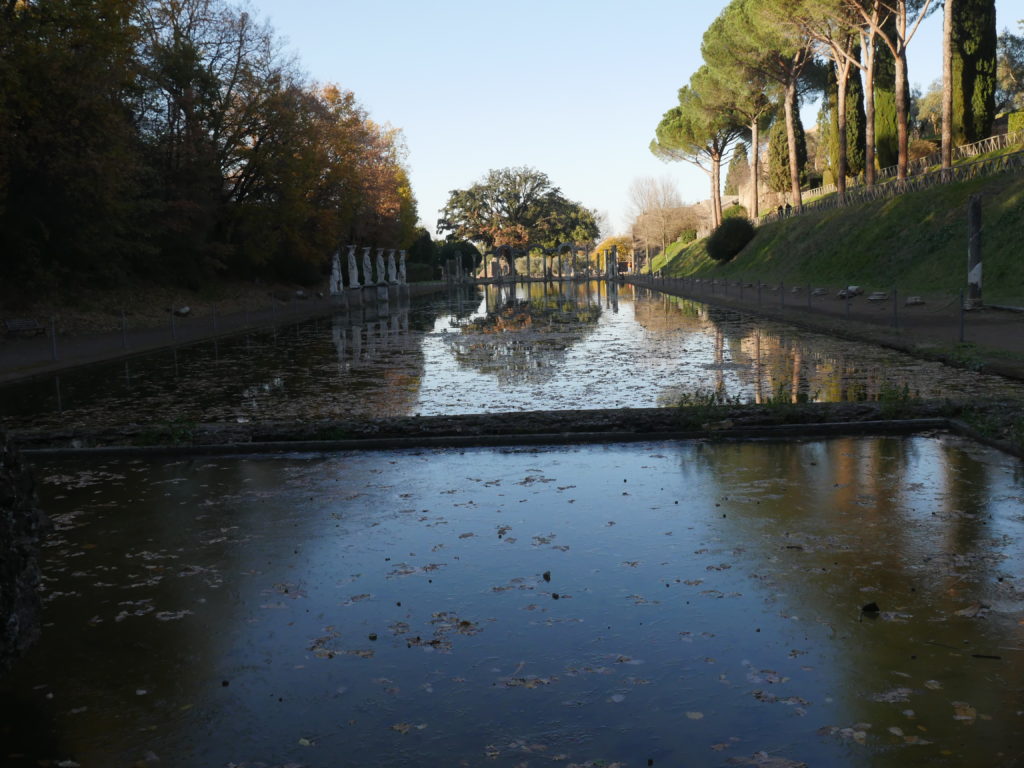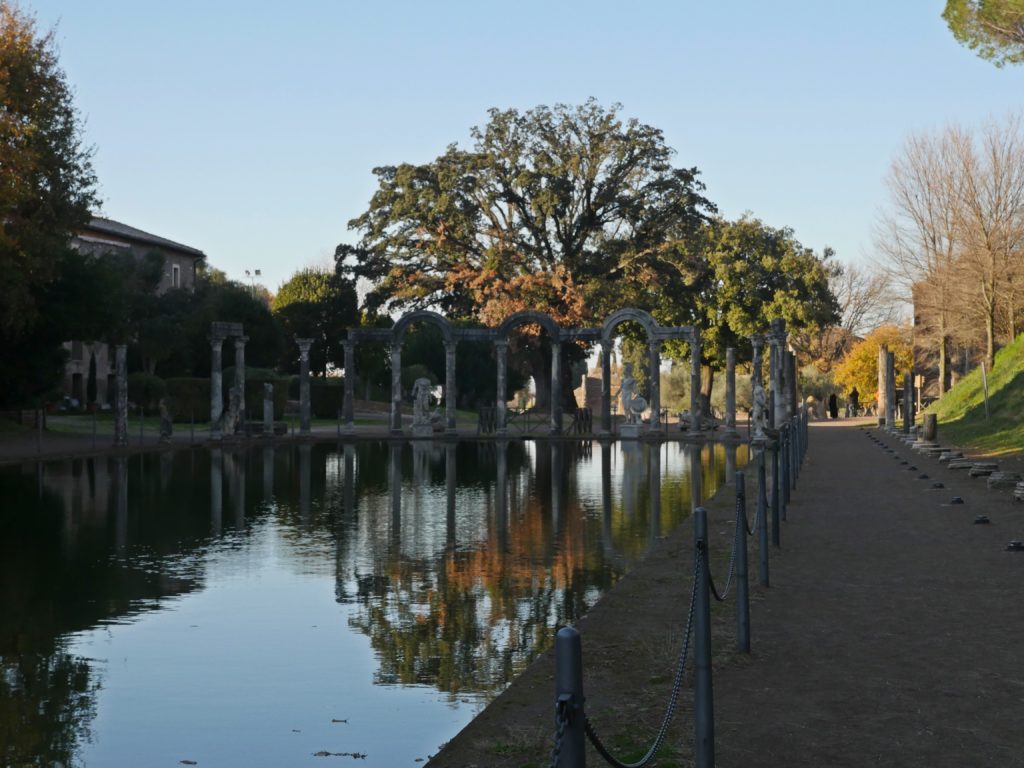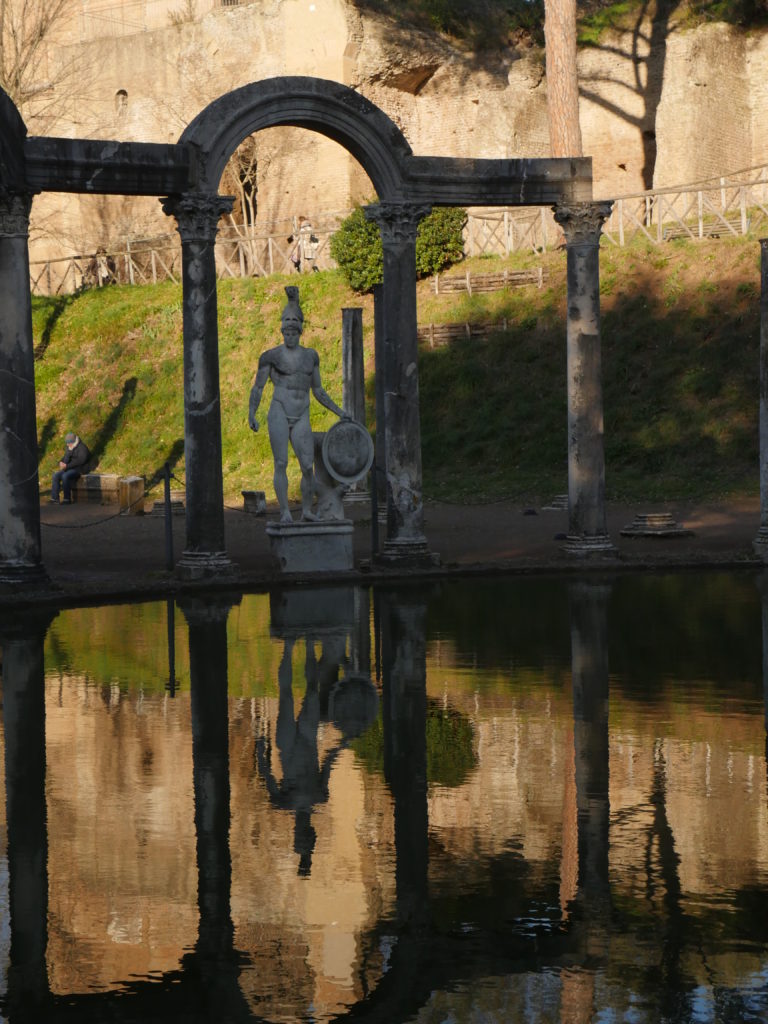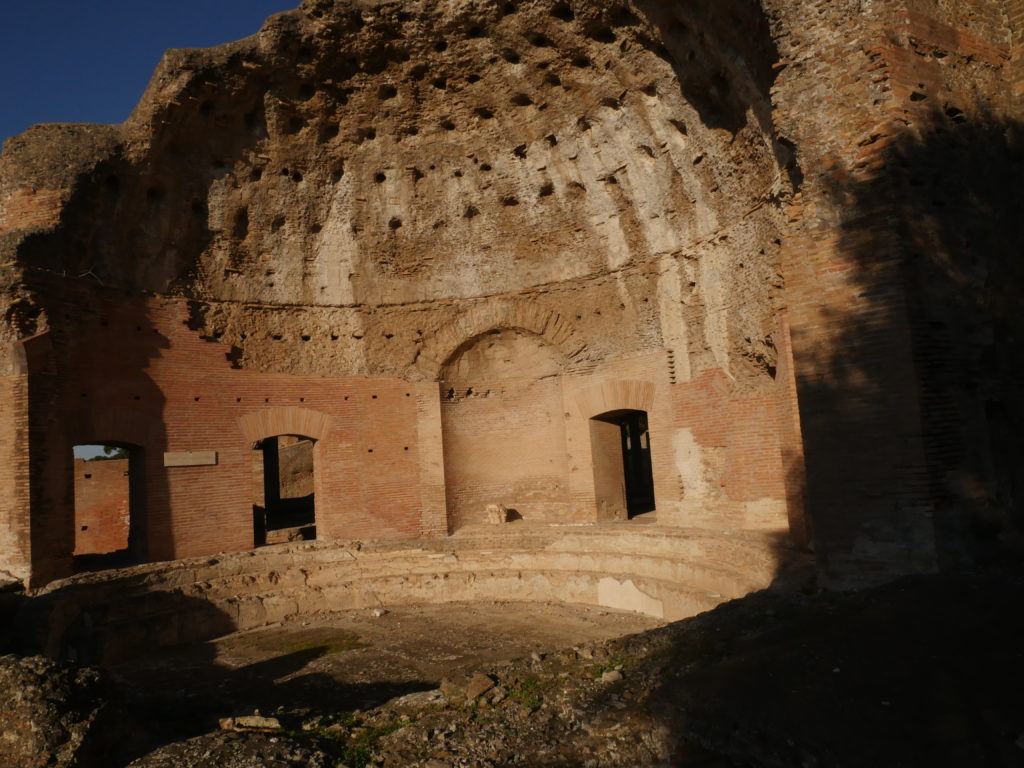Cardinal Ippolito d’Este, creator of the Villa d’Este and its gardens
“The Villa was commissioned by Cardinal Ippolito II d’Este (1509–1572), second son of Alfonso I d’Este, the Duke of Ferrara and grandson of Pope Alexander VI, along with Lucrezia Borgia. The Este family had been lords of Ferrara since 1393, and were famous as patrons of the arts and of the humanist scholars of the Renaissance. As a second son, Ippolito was destined for a career in the church; he was named ar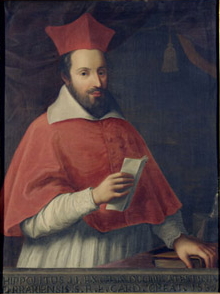 chbishop of Milan when he was only ten years old. At the age of 27, he was sent to the French court, where he became an advisor to the French King, Francis I, and in 1540 became a
chbishop of Milan when he was only ten years old. At the age of 27, he was sent to the French court, where he became an advisor to the French King, Francis I, and in 1540 became a 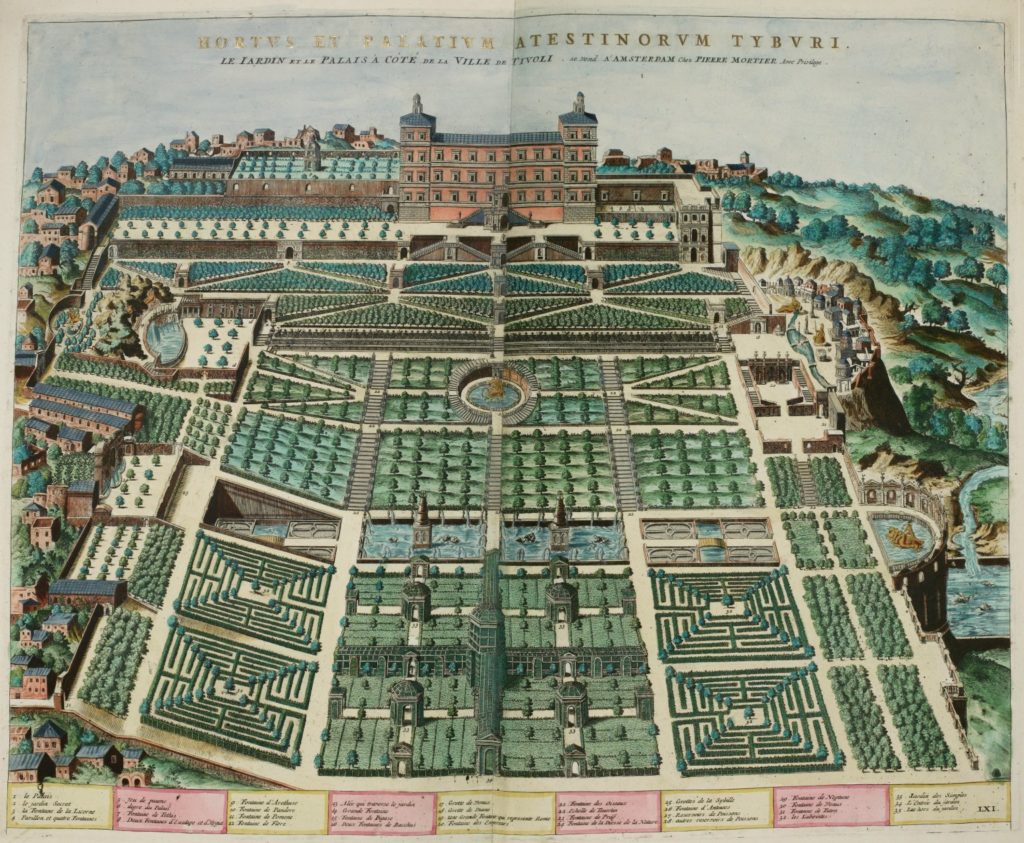 member of the King’s Private Council. At the age of thirty, at the request of the King, Pope Paul III made d’Este a cardinal. Thanks to his ecclesiastical and royal connections, he became one of the wealthiest cardinals of the time, with an annual income estimated at 120,000 scudi. He was a lavish patron of the arts, supporting among others the sculptor Benvenuto Cellini, the musician Pierluigi da Palestrina and the poet Torquato Tasso. While his income was enormous, he was always in debt. The new French King, Henry II, sent him as an envoy to Rome, where he played a major role in the social and political life of the city. He appeared destined to become Pope and used all of his money and influence toward that goal, but at the time of the Reformation and the Council of Trent, his extravagant style of life worked against him. His first candidacy for the papal position, in 1549, with the support of the French King, was blocked by the Habsburg Emperor. d’Este promptly withdrew his own candidacy, endorsed the Habsburg candidate, and was rewarded by the College of Cardinals on December 3, 1549 with the lifetime position of Governor of Tivoli. This new title suited d’Este, because he was already a passionate collector of antiquities, and it gave him jurisdiction over the site of Hadrian’s villa and other sites just being excavated. He did not give up his ambition to become Pope. He was five times a candidate for Pope, but was never selected.” The image of the estate above is from the 1560s.
member of the King’s Private Council. At the age of thirty, at the request of the King, Pope Paul III made d’Este a cardinal. Thanks to his ecclesiastical and royal connections, he became one of the wealthiest cardinals of the time, with an annual income estimated at 120,000 scudi. He was a lavish patron of the arts, supporting among others the sculptor Benvenuto Cellini, the musician Pierluigi da Palestrina and the poet Torquato Tasso. While his income was enormous, he was always in debt. The new French King, Henry II, sent him as an envoy to Rome, where he played a major role in the social and political life of the city. He appeared destined to become Pope and used all of his money and influence toward that goal, but at the time of the Reformation and the Council of Trent, his extravagant style of life worked against him. His first candidacy for the papal position, in 1549, with the support of the French King, was blocked by the Habsburg Emperor. d’Este promptly withdrew his own candidacy, endorsed the Habsburg candidate, and was rewarded by the College of Cardinals on December 3, 1549 with the lifetime position of Governor of Tivoli. This new title suited d’Este, because he was already a passionate collector of antiquities, and it gave him jurisdiction over the site of Hadrian’s villa and other sites just being excavated. He did not give up his ambition to become Pope. He was five times a candidate for Pope, but was never selected.” The image of the estate above is from the 1560s.
In honour of Pope Gregory’s visit to Tivoli, is what remains the centerpiece of the garden – the dragon fountain.
There are 50 high resolution images to load so please be patient. You can also click on the images->
The trains outside Vatican city change style. I recommend bus.
One of the Papal castles which is not open to the public at this time.
Built by Pope Pius II to keep away the unruly citizens of Tivoli. And close to this is the
entrance to Villa d’Este. Typical Papal Renaissance style- the equivalent of prosperity
preachers today. His private meditation area. The fountain spout seen from the house terrace.
The dragons in commemoration of Pope Gregory’s visit
Fountain of Neptune
There are many groves which reminds you of paganism worship of the gods
Recreation of Rome with Romulus & Remus
The last two the fountain of venus which I have used from other sources
Hard to get but is close by. Personally I was not as impressed as the gardens – Hadrian’s Villa
however it is larger & older archaeological area like the forum in Rome
